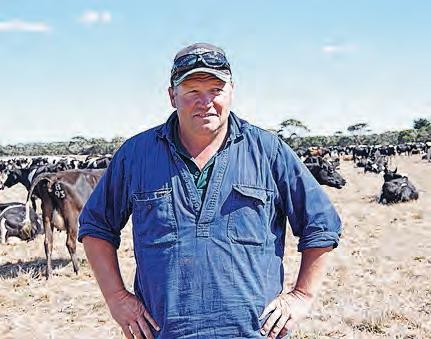

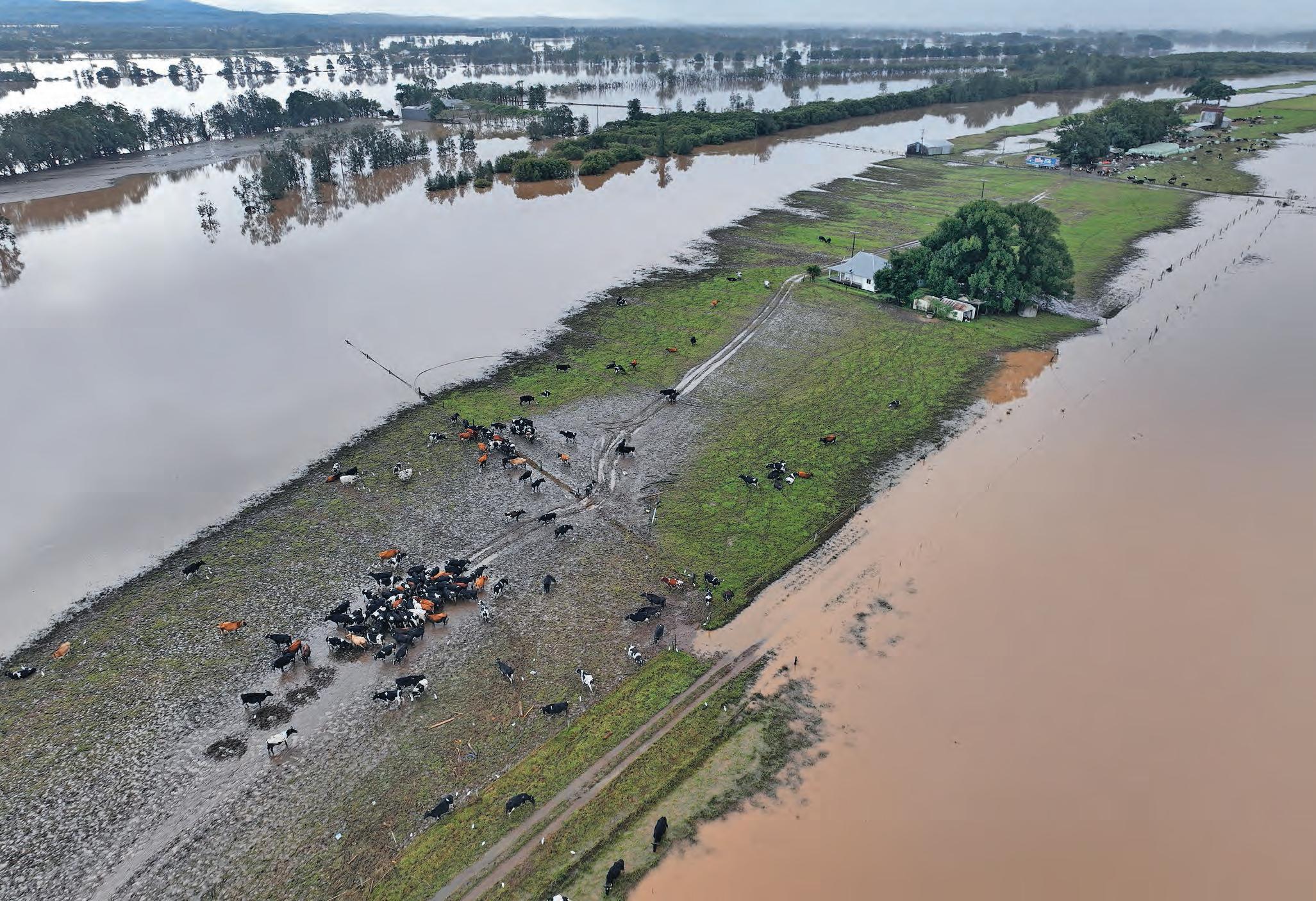










Imagine


Opening the vat to see more milk.






More milk from the same amount of feed.










With just 5 grams of Actisaf Sc 47 per cow per day (around 8 cents), you could unlock:
Up to 2.45kg/day ECM
No acidosis. No digestive issues. No hidden losses.


•Small daily gains compound fast.
•Actisaf Sc 47 optimises rumen function - helping cows digest feed better, stay cooler under stress, and produce more high-quality milk.
• Backed by a global meta-analysis and proven in Australian herds. LET
Improve milk fat and protein yield
Support resilience during heat stress Data onfile;availableuponrequest.

•You’re leaving litres on the table – without even knowing it?
•The herd next door is earning more … on the same feed?
• And for only 8 cents a day, you could unlock up to 2.45kg more milk – every day?
Manufactured by Phileo (by Lesaffre) Distributed in Australia & New Zealand by 4Sight www.4sight.bio | info@4sight.bio
+61 (0)439 423 333



BY ELIZA REDFERN
IT’S NO secret that Australia is the land of droughts and flooding rains, with most dairying regions experiencing this in some form or another this season.
Challenging weather conditions and rising input costs have weighed on milk production for most farming businesses during the 2024-25 season.
Dairy Australia’s Mid-Year Situation and Outlook report signalled further contraction in the Australian milk pool over the 2025-26 season, and rapidly evolving operating conditions will likely see this through.
While it’s unusual to have a drought in winter, several southern dairying regions are dealing with severe dry conditions, while wet weather has been the key constraint in some northern areas — not to mention the May floods that severely impacted businesses in the mid-north coast and Hunter regions of NSW.
In most regions, weather challenges have weighed on pasture growth and increased demand for supplementary feed, with dry conditions also tightening water availability.
Those with access to irrigation have able to support pasture growth, albeit at higher costs, as water storage levels lower.
Water for stock and domestic use have also been growing constraints for many farmers.
Furthermore, tightened fodder availability across most dairying regions has pressured feed costs, as on-farm stores are utilised and demand for supplementary feed rises.
Fodder prices have risen in most dairying regions, ranging up to 50 per cent more from May last year.
In light of these growing pressures for many farming businesses, culling rates have increased, with the number of head passing through the saleyards up six per cent on a season to date basis (July 2024 to May 2025).
There are also anecdotal reports of larger numbers going to the abattoirs, and young stock being sold.
While winter rain has arrived for some southern regions, indications from the Bureau of Meteorology suggest the drought is not yet broken, and conditions in northern regions remain on the wetter side.
Operating costs for dairy farming businesses continue to rise, especially with many now focusing on recovery.
For those affected by floods, damage to paddocks, stored feed and infrastructure will need attention, and those in drought areas are also

having to resow paddocks in the hopes of revival for spring.
With these prolonged challenging weather conditions, demand for supplementary feed will remain high for the already tight supply of bales across the country.
A continuation of unfavourable weather conditions will limit the amount of hay and silage produced in the first half of the season, in addition to grain yields.
This may keep the pressure on feed prices going forward, especially if grain export demand remains robust.
The expectation of continued financial pain for many farming businesses has also changed the appetite for business growth and investment intentions.
As reported in the 2025 National Dairy Farmer Survey, there are now fewer farming businesses reporting they are in an expansion phase (18 per cent) and a significant shift from major planned investments to those of a minor to moderate scale.
Farm margins will likely remain constrained in the new season, but the higher opening farm gate milk prices announced in June may help alleviate some of the input cost pain.
At the time of writing, the industry’s ‘silly season’ was not yet over, however, a handful of companies had announced step-ups, increasing the bottom and top of the range to $8.60/kg MS and $9.50/kg MS.
A contracting Australian milk pool could support mid-season step-ups, but these may be limited by further price movement during June, and how product returns shift in both export and domestic markets.
All in all, while recent rain in drought-affected regions provides signs of hope, decisions made on-farm to combat this season’s challenges will
likely have lingering impacts into 2025-26.
Higher farm gate milk prices are welcome, but pressures around feed availability and costs continue to mount, as do those involved with recovery from extreme weather conditions. These factors, combined with continued farm exits consistent with the long-term trend, are all likely to contribute to the expected contraction in the 2025-26 Australian milk pool.
Once industry has visibility on final 2024-25 full season volumes, and a better grasp of spring weather conditions, the path forward will be clearer.
ɋ Eliza Redfern is Dairy Australia’s analysis and insights manager.




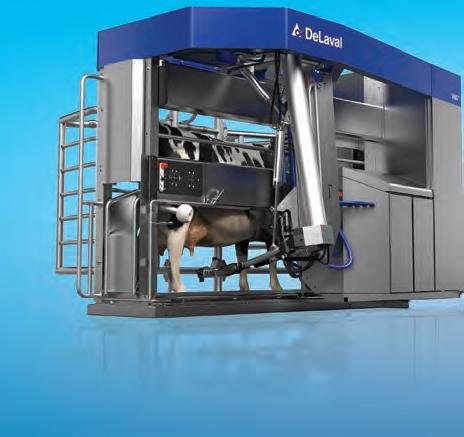













DAIRY INDUSTRY organisations across south-west Victoria are working together to provide critical support to dairy farmers affected by the ongoing drought.
The region’s Dairy Industry Leadership Group, established in 2016 by the Victorian Government in response to the dairy price downturn, continues to play a pivotal role in coordinating support services for dairy farmers and industry stakeholders.
The long-standing and strong relationship between DILG members ensures comprehensive support is available to dairy farmers in challenging times, including through COVID-19, fires, floods and previous extended dry periods.
DILG members include the dairy farmer representative bodies (Dairy Farmers Victoria and United Dairyfarmers of
Victoria), Agriculture Victoria, Rural Financial Counselling Service Victoria West, WestVic Dairy, milk processors, local government, relevant Commonwealth government agencies and local health care services.
DILG chair and Colac dairy farmer Mark Billing said the strength of the group lay in its regular communication and shared commitment to see the region’s dairy industry thrive.
“Members provide invaluable updates on the needs of farmers and how the broader industry is travelling,” Mark said.
“With that local information, our representative bodies have been able to seek government funding for support in the region.
“While we welcomed the recent expansions to the Victorian Government’s drought package, the region continues to
seek additional assistance.”
Several DILG members also sit on the South West Drought Co-Ordination group, led by Agriculture Victoria, which works across all sectors to provide drought relief.
These groups receive good support from the local business community as the drought continues to impact others in the supply chain.
Dairy is a key driver of the regional economy and remains the dominant industry in the region, producing 22 per cent of the nation’s milk, worth $1.3 billion at the farm gate.
Dairy Australia regional manager Lindsay Ferguson said his team had now shifted from delivering group workshops to providing personalised support.
“Our team is now visiting farmers
BY RICK BAYNE
TWO SOUTH-WEST Victorian women
are spearheading a campaign to ensure local farmers struggling through the worst drought on record are getting the support they need.
Elise McKinnon and Rebecca Mahony have started the Drought Support Victoria page on Facebook to share news and events that promote financial and mental wellbeing for everyone impacted by the drought.
They say the page is designed to build resilience in challenging times. The page can be found at: https://www.facebook.com/ groups/1544731803207198
Elise’s husband, Xavier McKinnon, is a vet with Hampden Vet Clinic Group, and they run a small beef operation near Warrnambool, while Rebecca is from a farm near Camperdown.
Xavier has seen the extent of the crisis for his local dairy farmer clients and both families have close friends doing it tough across the region.
“We’ve got a small beef farm and have had to sell some stock because we couldn’t afford to feed them all, but it isn’t as bad for us because my husband has another job,” Elise said.
Their work extends beyond the Facebook page.
Xavier helped to organise farmers’ support nights with AFL legend Kevin Sheedy and Elise joined with Geoff Rollinson from the


Warrnambool Coastcare Landcare Network to organise a meeting with farmers and host a drought relief roundtable meeting at Deakin University that led to the Farmer Led Drought Relief Alliance.
“We invited water authorities, local government, dairy representative bodies, mental health representatives, including the Rural Financial Counselling Service, and local
farmers to agree on and endorse the key priorities in getting help for farmers now,” Elise said.
“Everybody seems to be asking for different things from the government, but it is crucial in order to gain any traction that we need to be on the same page — a united and strong voice for our farmers.”
From those discussions, it became obvious a central depository was needed for farmers
one-on-one, delivering a drought resource information pack and providing a listening ear,” Lindsay said.
“The pack includes practical technical information to assist with decision-making, as well as contact details for health and wellbeing support. Our staff are able to refer farmers to specialist advisers or simply act as a sounding board.
“It’s important that farmers liaise with their key business partners, such as banker, milk processor, nutritionist and agronomist to help plan the way through.
“Once a plan is in place, most people find their levels of stress reduce significantly.”
For more stories on the ongoing drought in southern Victoria, see pages 10 to 13 of today’s Dairy News Australia and go to: https:// www.dairynewsaustralia.com.au
to see what resources are available, and the Facebook page was born.
“There is a lot of really great mental health and financial support available with Rural Financial Counselling Service, Let’s Talk, Need for Feed and other mental health support, but not all farmers know what is available,” Elise said.
“When you’re under financial pressure and you can’t focus on things, it helps to have a one-stop consolidation of what’s out there to support farmers so they can see what they can access for assistance.”
They aim to keep the page positive, resource-driven and non-political. It has grown to nearly 400 members since it started in mid-May.
“We need simple things to get money into farmers’ pockets right now, like exceptional circumstances loans, unlocking the treasurer’s emergency fund, rate relief, larger and tiered one-for-one infrastructure grants, and hay, fodder and freight support,” Elise said.
“The biggest thing is food on the ground now. It has rained, but it’s still going to take a couple of months for the grass to grow,” Rebecca said.
“We are working on ideas to get feed to farmers now and educate the broader community on why this drought, our farmers and our food matters.”
For more stories on the ongoing drought in southern Victoria, see pages 10 to 13 of today’s Dairy News Australia and go to: https:// www.dairynewsaustralia.com.au




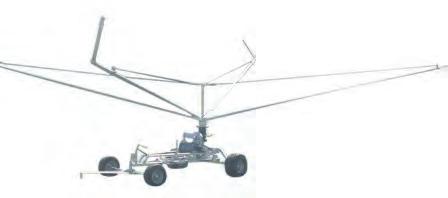
AS THEY endure droughts and rebuild after severe flooding, many dairy farmers face a new battle — milk prices that will not cover the cost of production.
Australian Dairy Farmers president Ben Bennett was responding to dairy processors revealing their new season prices, which are lower than expected.
Despite international dairy markets rising over the past 12 months, the newly announced prices are up by as little as five per cent in some instances.
Mr Bennett said the increase in prices has not kept pace with inflation, let alone allowing for the costs of responding to droughts and floods, including increased feed costs.
“Some dairy farmers just won’t be able to endure this latest blow and they’ll have to exit the industry,” he said.
“It’s a dire situation that I fear will lead to structural change in our industry.”
Mr Bennett said one challenge was that dairy prices were constrained on supermarket shelves.
“When a cyclone wipes out Queensland’s banana growers, the price of bananas rises rapidly in supermarkets.
“Yet we have almost half of Australia’s dairy farmers impacted by either a significant drought or a one-in-500 year flood and the shelf price of fresh milk hasn’t budged.”
He said many dairy farmers had recorded financial losses of more than $1000 per head in the 2024-25 supply season — a figure which is expected to be dwarfed in 2025-26.
“Farmers will try and bridge this gap by selling stock to reduce the feed burden and fund the feed and water for their remaining cattle. This next season is going to be much worse again in terms of farmers’ financial losses.”
Mr Bennett said there had been a loss of
liquidity in the cash flows not only of dairy farmers, but also of service providers.
“Dairy farmers are reliant on a phenomenal service industry employing thousands of people, and the lack of assistance leaves them vulnerable too.
“Support measures such as the Regional Investment Corporation (RIC) with its onerous application criteria fail to deliver what’s needed for farmers in a crisis situation, leading to a ripple effect which will be felt throughout the industry.
“We need immediate crisis support, including feed and water transport subsidies, cash grants and low interest loans and the activation of what’s known as ‘Category C and D’ disaster support measures in conjunction with the Commonwealth.
“Tackling the ‘cash crunch’ for farmers and communities will not only keep our farmers producing milk, but also benefit the regional
BY SOPHIE BALDWIN
Chloe and Rodney Brown from Kirkstall in southwest Victoria will be looking at all opening milk prices after their processor opened at $8.60/kg of milk solids.
“Whilst it is not the number I wanted, it does give me a starting point for my budget to work around,” Chloe said.
“Processors can always do better, but everyone needs to make money.
“They do have pressures and risks for their business just like we do, and I keep telling myself this is an opening price and not the end price.”
Chloe said once all the opening prices were on the table she and her husband would assess all their opportunities
“I am sure everyone will be looking at the milk price and what that number means for their own business,” she said.
Like all Western District farmers, the Browns have been struggling with drought for the past two years.
“We were only able to graze grass for eight weeks, so it has been really tricky, although I do believe we are in a better position this year than we were last year.”
She said the herd was currently 100 days in milk, in good condition and producing well.

She hopes this will continue through the season.
The Browns have been following a very strict feed budget and are still feeding their own silage.
They are supplementing their cows with other feed sources including cotton seed and almond hulls to help extend their own feed out as long as possible.

control clinical signs of coccidiosis
Celmanax™ - research proven to reduce the incidence, severity andduration of scours(including cryptosporidiosis)
Safmannan® – research proven to improve immune response and bind a broad spectrum of major pathogens (E.coliandSalmonella)
Betaine – osmoregulator to aid hydrationandgutwallintegrity
Actisaf®Sc47INST - research proven to promote a balanced gut microbiota, enhancefeedintakeanddigestion for improved daily gains, support healthy rumen development and healthyimmunefunction,andreduce incidence of scours.
SolubleVitaminsandOrganicTrace Minerals Prebiotics&Probiotics to aid digestionandgutmicrobialbalance (28billionCFUper10gramdose)
They currently have enough hay and silage in the shed until the middle of August.
“We were lucky to be under a rain cloud where we got 18mm of rain, and we are starting to see a bit of green come through the paddocks which we welcome,” Chloe said.
The Browns are hoping by the time August comes around, those shoots will be grass and pasture will be returned to
communities where they shop.
“Fodder and hay reserves have run out and dairy farmers are looking at trucking hay from as far as Western Australia and Queensland.
“The NSW Government’s positive response to the floods, combined with flood recovery demand for hay in NSW, will mean there’s even less fodder and hay available to supply drought affected farmers in other states.”
Mr Bennett said there was a simple but pivotal role government can play in underwriting or subsidising stock feed imports from overseas, in order to give the commercial market the confidence to import more stock feed and increase supply to get farmers through the winter months.
ɋ For more stories about opening milk prices, step-ups, processor announcements and farmer reactions, go to: https://www.dairynewsaustralia.com.au
the diet.
The couple milks 200 Jersey cows.
Normally they run a total autumn calving herd, but last year a salmonella outbreak saw 60 cows abort.
“We have 40 cows that are dry and due to calve in September, which I am hoping in the end will have been a bit of a saving grace.”
Chloe said she and Rodney were trying to be adaptable and focus on the feed and opportunities they do have in front of them.
“We had three failed summer crops,” she said.
“Everything that could go wrong did go wrong, but we are in this for the long term and we just have to remain flexible.
“I am on my fourth plan already.”
Chloe said while the dairy industry could be hard and this was a tough period, she was hoping it won’t go on for too much longer.
“We are in this industry for the long haul and our long-term plan will not be changed by one season.
“We have done hard before and we will do it again.”
Chloe said she had been actively choosing to find and focus on the glimmers of hope that do exist, even though she might have to search to find them.
“It’s not about pretending things aren’t tough, because they absolutely are — it’s just about holding space for optimism.”
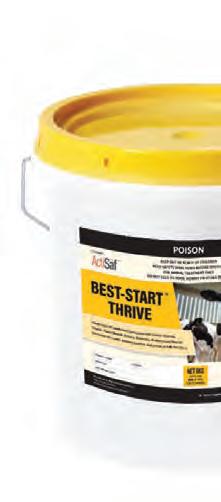


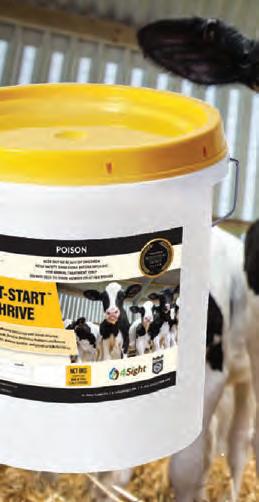




BY RICK BAYNE
WESTERN VICTORIAN dairy farmers have been in the spotlight over recent months as the r egion battles the worst drought in living memory.
And those fighting for the industry don’t have to look far to understand the breadth of the problem.
For the first time in memory, the three main dairy farmer representative bodies are being led by western Victorian farmers.
Producing 23 per cent of Australia’s milk, western Victoria is the nation’s leading dairy region, ahead of Murray (21 per cent) and Gippsland (21 per cent).
With 66 per cent of the nation’s milk being produced in Victoria, it’s not surprising that the power point for industry representation is in the state, but it’s rare for all the leading dairy groups to be led by farmers working within a 100km radius.
Australian Dairy Farmers president Ben Bennett hails from Pomborneit near Colac, United Dairyfarmers of Victoria president Bernie Free is from Winslow, north of Warrnambool, and Dairy Farmers Victoria president Mark Billing is from just
outside Colac.
Despite the regional dominance, all leaders stress that they represent their entire farming bases and that they continue to connect with all regions.
Bernie Free said it’s a coincidence that the leaders all live in western Victoria, but he’s not surprised.
“This is the region with the most potential,” he said.
“It has the largest volume of milk coming from one shire (Corangamite) in all of Australia and the second largest, Moyne, is right next to it.
“There are lots of reasons why leaders should come from here, but there are lots of reasons why leaders should come from other parts of Victoria and the rest of Australia.”
Bernie said he believed the region’s current influence was inspired by policy concerns.
“Western Victoria led the charge over the inadequacy of the policy framework in the Dairy Plan and its lack of outcomes and direction, so I think that’s where it started,” he said.
He describes the role as interesting, challenging and rewarding, but also frustrating.
“It makes no difference in getting federal and state politicians to the region and to
Advertising Rachel Fowles 0429 675 962 rachel.fowles@dairynewsaustralia.com.au
Editor Sandy Lloyd (03) 5820 3252 editor@dairynewsaustralia.com.au
Regional editor news@dairynewsaustralia.com.au
get them to understand the real issues facing people,” he said.
Mark Billing said industry leadership often moved in cycles.
“I think it goes in cycles, and at the moment we have a concentration of leadership in the south-west, but Gippsland had UDV and ADF presidents at the same time in the past,” Mark said.
“I don’t think there’s any particular reason for it, but it has come more to the fore in the past 12 months with the drought conditions in south-west Victoria.
“We all have our different leadership styles.”
Mark said it was important to keep abreast of issues impacting all regions.
“I’m just coming back from an industry dinner in Gippsland. We need to have our eyes open to what’s going in other parts of the state, but also nationwide.
“In the main, the issues are the same, but there are regional vagaries that you need to be across.
“For me, that means a fair bit of travel because I prefer to talk to people face-to-face and hear their stories and distil that down in a message to government and others in our industry.”
Publisher Shepparton Newspapers Pty Ltd
Printed by Newsprinters Pty Ltd
Head Office 7940 Goulburn Valley Highway
Shepparton, VIC 3630
Phone (03) 5831 2312
Postal address PO Box 204
Shepparton, Victoria 3632 Australia
Ben Bennett has had two terms in the national role and said it’s about representing all areas.
“It’s a bit of a coincidence and luck of how it goes, but a huge portion of Australia’s dairy is here in the south-west,” Ben said.
“The south-west is pretty passionate about the industry, which is quite healthy.”
However, Ben said that having local leaders didn’t mean favouritism for the south-west.
“I don’t know if there’s any advantage,” he said.
“I don’t know how much cut through we’re getting with the government.
“They have a task force and they haven’t even got a dairy farmer on it, let alone an agronomist or nutritionist, who are vital people.
“There are issues in every region — buybacks in northern Victoria, Gippsland is now in a green drought which is what south-west Victoria was 12 months ago, South Australia has endured it for three years, and everyone has depleted fodder.”
Ben said rain in early June eased some anxiety for farmers, but they would have to endure more difficult times during winter.
“We’re not going to have decent feed in front of the cows until late August,” he said.
Dairy News Australia welcomes contributions from stakeholders in the dairy industry, and particularly from organisations wishing to advance the industry.
Contributions and photos can be sent to: editor@dairynewsaustralia.com.au
Letters to the editor on topical issues are also welcome.
Letters should be concise and carry the name and town address of the author, as well as a contact phone number, not for publication.
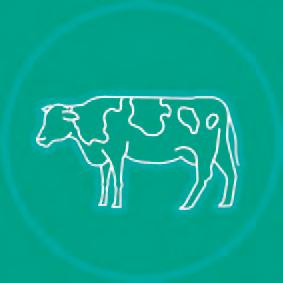
As reported in a previous article in Dairy Farmer, results from the long running dsm-firmenich Global Mycotoxin Survey consistently identified that the three major mycotoxins of economic importance in feedstuffs for ruminants in Australia are deoxynivalenol (DON), fumon-isins (FUM) and zearalenone (ZEN), with aflatoxin and ergot alkaloids making regular appearances. Looking into data for the last three years with a focus on ruminants, fumonisins were the most frequently detected mycotoxin class (70% of samples had FUM). ZEN was detected in 54% of samples with an average contamination level of 574 ppb, which is deemed to be a high risk for ruminants. The majority of the very high detections of ZEN came from silage samples. ZEN was also detected in grains and by-products. As mentioned in previous articles, the presence of two or more mycotoxins, often from different feedstuffs, can have a much more significant impact on the animal than the level of a single mycotoxin.
In simple terms, ZEN is chemically very similar to the female hormone oestrogen and will bind to the oestrogen binding sites in breeding animals therefore inhibiting the proper action of oestrogen, effectively putting heifers and cows on a ‘contraceptive pill’. Oestrogen receptors are found in the uterus, mammary gland and parts of the brain thus the effects of ZEN can have wide ranging impacts and include premature udder enlargement, false oestrus, unsuccessful insemination and in some cases abortions. While ZEN

is typically considered a female hormone, the effect on bulls can also be quite marked with ZEN intake known to influence testicular atrophy and poor semen quality.
Like many of the mycotoxins, ZEN has a chemical structure that does not permit it to be easily bound by simple binders. Some microbes in the rumen can degrade ZEN, however they result in compounds which can be up to 60 times more oestrogenic than ZEN itself. Therefore, the most effective way of reducing the impacts ZEN have in the breeding herd is to have ZEN enzymatically cleaved in the rumen into non-oestrogenic products before it is absorbed. Irreversible deactivation of ZEN is achieved through the use of Mycofix® Plus, as shown in Figure 1. As seen in the previous article, Mycofix® Plus is also proven to deactivate DON and other mycotoxins, further reducing the impacts that can occur from multiple mycotoxin contamination.
Figure 1: Schematic of the enzymic deactivation of zearalenone by Mycofix® Plus to non-toxic forms
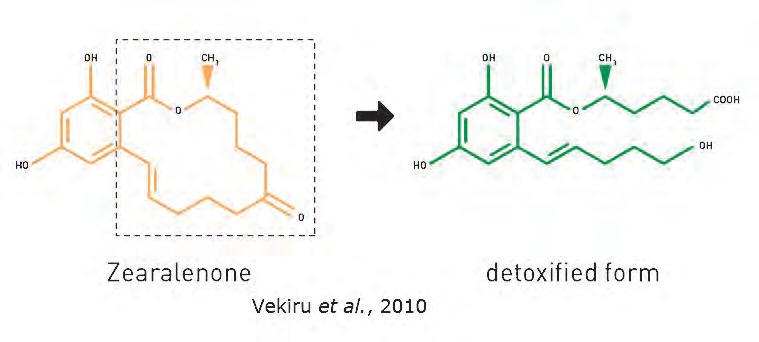





























BY RICK BAYNE
DAIRY FARMERS on the NSW mid-north coast thought the 2021 flood was bad but they took solace in the knowledge that it was classified as a one-in-100-year flood.
Just four years later they have had to reconsider what flooding can do to their region.
If the 2021 event was a one-in-100 flood, the 2025 inundation was considered a onein-500 years catastrophe.
For some, it may be a bridge too far, while others will be counting the costs for years to come.
James Neal, a fifth-generation dairy farmer from Oxley Island near Taree, has seen a lot over his time but says this has been the worst natural disaster by a fair way.
James farms with his wife Katrina and parents Peter and Cheryl Neal, usually milking up to 800 cows all year round, in a predominantly pasture-based system. A former chair of the D airy NSW Board, he joined Dairy Australia as a director last year.
The family runs a progressive farm, with a 60-unit rotary dairy for the herd primarily based on Holstein genetics, although Jersey bulls are used over the heifers.
Milk is produced all year round, achieved by batch calving. Extended lactations are used to minimise stress on cows and reduce cows culled for infertility.
“Our cows’ wellbeing is our number one priority,” James says, achieving that through high-quality care for newborn calves and ensuring the milking process is a comfortable experience.
The farm is based on highly productive pastures which provide the basis for excellent quality milk and high in-calf rates.
But nothing can prepare for such a devastating natural disaster, which James says was completely beyond comprehension.
“The 2021 flood was one-in-100 years and was a walk in the park compared to this onein-500 years flood,” James said.
“It has decimated a lot of farmers with the unprecedented high floodwater levels having destroyed hundreds of thousands of dollars of milking plant, farm equipment, fences, livestock and winter pastures.”
James’s farm only lost 80 heifers and two cows to the flood, which was extremely lucky, as the milking yard was already under water and they had nowhere to store them.
“When they were left overnight, they were standing in a foot of flowing water on a previously flood-free ridge. We didn’t know if

any would be there in the morning.
“We were probably the largest farm that was this severely affected.
“In March we were milking 800. We fully dried off all our spring calving cows early before the flood because of the extremely wet conditions for the six weeks prior to the flood.
“There’s drought in western Victoria and South Australia and here it just hasn’t stopped raining.
“It wasn’t large amounts but it was raining every day so it was a boggy mess before the flood and then we ended up having 746mm for May, including 600mm in three days.”
The previous highest May rainfall was 407mm, meaning the 2025 deluge almost doubled anything in the past.
“We would have been laughing,” James said.
“Even though it was a bit wet, it was looking like a good season. We had all our feed in and it was coming good but now it’s all gone, which is really demoralising.”
James couldn’t milk for four days due to floodwater staying up for so long, which caused huge problems for cow production and mastitis.
“I’ve lost heaps of stuff but I’m slowly getting everything going again. There’s no pasture and not much silage so I had to sell 250 cows to the abattoir just for cash flow.
“We lost four cars and the house went under and we lost everything in it. In 2021 none of the houses on our farm went under; in this flood five out of nine went under.”
Like many farmers, James had saved hay for a rainy day — or a drought.
“I had three haysheds. I kept a lot as a drought and flood back-up but the sheds all went under so I lost a third of the hay

straight away.
“The water went two bales high through the shed and it heats up, so, we had to take hay out to stop the rest from self-combusting and burning the rest of it down.”
On top of this all the winter pastures have died off, leading to a massive feed gap for next few months, requiring hand-feeding in extremely wet and muddy conditions.
This extra workload from extra hand feeding and repairing flood damage is obviously overloading his eight staff. The dramatically reduced income and higher costs make continuing to farm extremely challenging.
“Conservatively, I’ve probably lost nearly a million bucks, by the time everything is totalled up,” James said.
Like many local farmers, flood insurance has become impractical and now James faces a rebuild with reduced income.
“The government gave us $25,000 but that only covers one truckload of feed or for me one fortnight of staff wages,” James said.
“I’ve gone from producing 9000 litres a day to about 1700 litres at the moment.
“I’ve got not much income but I’ve still got the expenses and there’s so much extra work to do for everyone.
“None of us have any spare time as it is but there’s timber, bales, plastic and rubbish caught in fences and there’s dead cows.

“It’s tough. I couldn’t afford the feed costs and when it’s muddy like this, you can’t get on the paddocks at all.
“I had to downsize the herd as it’s impossible to find agistment because there are already cattle in the area because of the drought in south-west Victoria.
“It’s an absolute shit show completely beyond our control.”
James is urging the government to declare the flood zone a Category D disaster, rather than the current Category C.
“Category D funding would give $75,000 to farmers instead of $25,000 so that would help a bit.”
James admits he’s not sure that every farmer in the region will survive this latest blow.
“We’ve had regular adversities over the years. The milk price isn’t as good as it should have been and you get these things and you just don’t have the resilience to bounce back.
“Some farmers are barely making a profit. Even though the milk price is fairly high, because we produce year-round, it’s a lot more expensive to produce.
“There’s a small margin and when you have to do all these replacements with hundreds of thousands of dollars of equipment, it’s tough for everybody.”
ɋ More photos online at: www.dairynewsaustralia.com.au
Fleckvieh improves fertility, strength, longevity, tness and beef value without sacri cing milk production.
FIND OUT WHY FLECKVIEH IS THE SECOND MOST MILKED BREED IN THE WORLD AND THE MOST USED SEMEN IN THE NETHERLANDS!
Bayern-Genetik-Australia your No1 source for German Fleckvieh
For more information contact George Cassar on 02 6550 7661
Email: karovafleckvieh@gmail.com
Follow us on Facebook:
Bayern Genetik Fleckvieh - Australia Web: bayern-genetik.com.au

BY RICK BAYNE
TIM BALE realises he’s escaped the worst of it, but he doesn’t have to look far to see his fellow farmers really doing it tough.
Tim, from Stewarts River near Taree, NSW, milks more than 300 mostly Holsteins with a few Jerseys on a mostly pasture-based system. He has been on the farm for 30 years, and he’s never seen a flood like the one that hit in late May.
“This is the worst in memory,” he said.
“We flooded, but we’re not on a lower river, so it didn’t get into our house or dairy like it did for some.
“We were very wet beforehand and that’s why the flood was so big.
“The whole Manning Valley was sodden already, and a lot of us were having trouble anyway with lameness, and had to stop planting because we couldn’t drive on paddocks.
“Then we had 600mm in a few days across the whole catchment.
“There was no dry land. The biggest difference is that a lot of the houses didn’t go under in 2021, but this time most of the farmers in the lower valley had to be evacuated.”
The 2021 flood — described as a one-in-100 event — prompted a lot of farmers to lift motors and raise feed pads to protect against future inundations.
It still didn’t work.
“This one was worse,” Tim said.
“It varied dramatically from about half a metre higher to 1.2 metres higher. The feed pads should have stayed dry, but they didn’t.”
The previous worst flood, in 1929, peaked at just under 5.99m in Taree. This one reached 6.5m.
Although he wasn’t as badly impacted as some, Tim is still counting the cost.
He did a rough calculation of what farmers in his suppliers’ group lost, including damage and production losses expected for the next three months.
It ranged from $400,000 to more than a million.
Tim was at the lower level, but a $400,000 setback was still hard to take.
“You can’t insure for a flood like that; it’s not worth it,” he said.
Apart from the waterlogging, he lost several heifers.
“I had a dry paddock with 40 heifers. I thought I lost all of them, but I managed to get 29 back,” he said.
“They just swam a few miles up the highway. Cows can generally swim and float fairly well,

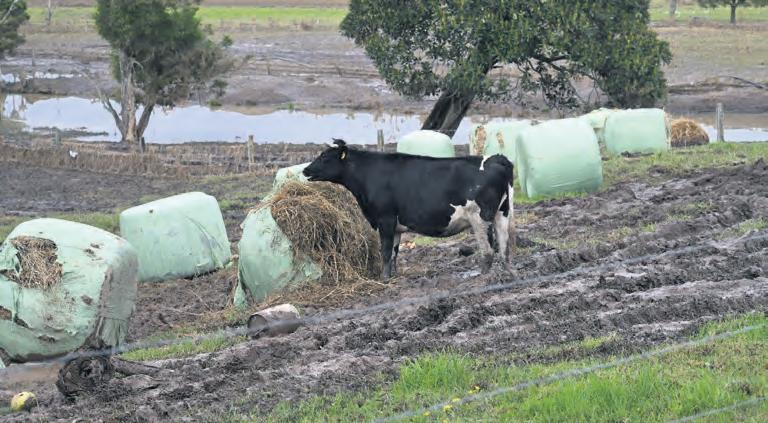
but it’s when they get caught up in a tree or fence.
“I couldn’t do anything about the heifers because I couldn’t get out to help them.
“I had a worker come out from town to move them to another paddock which probably saved them, because they would have washed across the highway and down the river.
“We were lucky that other people found them for us.
“The mess was unbelievable. The logs and debris on the side of the road was like you see when they’ve felled a forest.
“It wasn’t like that in ’21,” he said.
In 2021, Tim and his wife Julie were stuck on
the farm for three days with no power.
This time his farm manager Bryan Bartlett arrived at 3 o’clock in the morning with his overnight bag.
“He stayed with us for the week, which made a big difference,” Tim said.
“If I had been on my own. I’d have to do something drastic like milk once a day to get through, but we were lucky because we only lost power for a couple of hours.”
Production is down about 20 per cent, but the biggest issue is still evolving.
“Looking ahead, we’re going to be down on how much silage we’re going to be able to make,” Tim said.
“It’s going to take a good two or three months to recover.
“Because it had been wet for a while, we’d only half planted so we’re getting a drone in to plant the rest, but when you plant winter feed in June, it’s already cold and it’s very slow to establish, and it’s not going to be great.”
Tim realises most of his local farmer friends have lost much more, so, in true country tradition, he’s doing his bit to help out.
He’s milking cows for a neighbour whose houses and dairy were flooded, and once he realised that he didn’t need to use his generator, he lent it to another farmer.
As a board member of eastAUSmilk, Tim is also helping on a broader scale.
Last year, eastAUSmilk’s team collectively assisted 29 farm businesses in Queensland to access disaster recovery funding and emergency freight subsidies and 11 in NSW.
“EastAUSmilk has been around everyone a few times and employed a consultant who will move to the area to support local farmers.”
He admits some farmers in the area are not travelling well.
“There is resilience, but there are a lot of farmers at an age when they’re wondering how much longer they will be going anyway.
“One has cashed in the whole herd and I think another two will go. They were already on the cusp, but this was the trigger.
“When they were predicting it, we thought it was only four years since the big flood in 2021, it’s not going to be bigger than that, but it was.
“I don’t know what would have happened if there were king tides and the water couldn’t get out.”
Tim is putting a proposal to suppliers to provide more help, and he said farmers could access Category C $25,000 disaster funding and a freight subsidy from the government — but that doesn’t cover what’s needed.
“To a dairy farmer whose milk cheque might be $150,000 a month, $25,000 doesn’t go very far. It’s basically just a semi load of hay,” he said. Many farmers in the region were still recovering from a smaller flood in January.
Any farmer who accessed the funding in January, can’t apply this time.
He also feels for his counterparts in Victoria and South Australia who are battling drought.
“I don’t know what’s worse,” Tim said.
“The drought creeps up on you, but I think I’d rather have a drought because you can set your day and cows where they can go.
“It costs you money, but you can get yourself in a pattern, but when it’s wet and boggy and you still have to move and feed cows, it’s a bastard.”






BY JEANETTE SEVERS
NINE YEARS ago, Mick and Paula Hughes of Inverloch learned about drought in South Gippsland.
A few years prior, the couple had moved its dairy business to the coastal Inverloch dryland farm with its reliable rainfall. But it stopped raining and groundwater became scarce.
In 2016, an innovative decision involving five dairy farmers and the local water authority, saw a disused dam made available for stock and domestic water.
South Gippsland Water offered the farmers water from the disused Inverloch water basin for stock use and to wash down their dairies.
Those five farmers funded the work to pipe water to their farms from the disused water reserve.
They lay 90mm polypipe across 15km of farmland, under fence lines and roadways as much as possible. The job cost 600 hours of work and about $140,000 t o set up.
The pipeline provided 5000 litres of water daily for each farm, calculated at a drinking water rate of 150 litres/cow/day, and 2000 litres for dairy washdown.
The five farmers were on a roster for pumping the water from the main source to a central dam on each farm.
In all, 3000 dairy cows were saved, and












the rescue effort kept five dairy farms operating.
The work to drought-proof their farms didn’t stop there.
“After 2016, we built more dams, enlarged dams and de-silted dams,” Mick said.
“We’re doing it again now, to try and get through this drought [in 2025].
“We’ve also cleaned out existing drains and cut in more spoon drains to catch run-off and direct it to dams when it rains.
“So is every other farmer — everywhere I look, there’s an excavator cleaning out dams and cutting in more drains to catch run-off when it does eventually rain.”
This year, every farmer in South and West Gippsland and the Latrobe Valley knows it is important to do all they can to preserve water.
But that knowledge doesn’t help when rain doesn’t fall. Farmers have been feeding out since December 2024 and many ha ve been conserving water for longer.
Similar innovative ideas need to be considered this time around, as dairy farmers in West and South Gippsland and the Latr obe Valley ask for help.
“We’ve been talking to water authorities about using disused reservoirs, dams and t o get bores up and running — if there’s any around — for those farmers out of water or low on water stores,” Mick, who is also a board member of GippsDairy, said.

“We’re trying to find water, but there doesn’t appear to be any available. Every farmer is de-stocking, every farmer is talking about water, and every farmer is hoping for winter rain.
“Farmers are transferring water across farms, running pipes across paddocks, and pumping water between dams. They are also using their effluent trucks and firefighting pumps to move water.”
GippsDairy board president Sarah O’Brien said there were hundreds of dairy
farmers affected by the lack of rainfall.
GippsDairy personnel are liaising with water authorities to try and determine avenues for supplying water on farm for stock and domestic use.
Farmers need access to emergency water supply points managed by councils and water authorities, and to public and private bores across the region.
GippsDairy also wants planning authorities to fast-track requests from farmers to clean out dams, enlarge dams and to build new dams.
“Many farmers have now spent many months moving water between dams on their properties, or from neighbouring properties,” Sarah said.
“Easing restrictions on applications to clean out and enlarge dams is essential to farmer wellbeing and to enable them to get ready to capture more run-off water.
“We are also asking for a reduction in the cost of buying water from standpipes.”
“Just under 20,000 litres costs about $500 at the standpipe, and that’s not sustainable,” Mick said.
“Alternate water sources don’t appear to be available to us. Coastal bores are saline, which won’t help for stock use.”
ɋ For the full story, go to: https://www. dairynewsaustralia.com.au/news/dam-helpneeded-again/
ɋ For more stories about the drought in southern Victoria, go to: https://www.dairynewsaustralia.com.au






BY JEANETTE SEVERS
IN THE Leongatha district, in South Gippsland, many dairy farmers have been sourcing water since September 2024 to service their milking herds.
Benjamin Vagg, of Leongatha South, is a South Gippsland committee member of Dairy Farmers Victoria.
He is concerned about how the ongoing drought and its multiplier effects are affecting farmers in his region.
“The drought has gone beyond critical here,” he said.
“We’ll have no water come September if there’s no significant rainfall.”
He is worried about the many farmers who have sold so many cows that their herd is below their replacement number.
“There won’t be replacement stock in production when they’re needed, because of the numbers of cows sold to slaughter,” Benjamin said.
“A lot of people dried off early.
“Then because they sold cows, they’re going to be calving down less replacements than they need.
“After spring calving, which will start in June for some dairy farmers, they’ll be below their break even production level.”
This will have impacts beyond the next couple of years, for herd rebuilding and milk production.
“As herds come into joining this season,
we’re also finding rising-two-year-old heifers aren’t in the form they need to be at joining for optimal fertility and production,”
Benjamin said.
“There’s going to be heifers that are underdone and there won’t be replacements just sitting out there for people to go and buy.”
The dryland farmers of South Gippsland use the autumn and winter rainfall to harvest their herd’s fodder needs for the year.
“We make money in mud in South Gippsland,” Benjamin said.
In 2024, a warmer than average autumn, no rain in winter and a failed spring, followed by a dry and hot summer, extended into a dry and warm autumn with high pressure systems continuing to chase rain away.
The Bureau of Meterology’s ‘Fast Break’ indicates soil moisture ranking was drier than normal.
In late May, the plant-available moisture was decile one for perennial pasture.
Agriculture Victoria has a real time soil moisture monitoring website available for farmers to check their region.
Using 11 global predictor models, the BOM prediction is for a drier June to August period with warmer temperatures over the next three months.
There are early indicators of a potential La Niña in spring.
“The way it looks now, even if we have an average winter and average spring, most farms probably won’t produce what they did last year,” Benjamin said.

“They won’t have the capacity in the herd. And they won’t be buying cows to build production because they’re not going to be available.”
Benjamin is concerned about the wellbeing and mental health of his fellow farmers, given the current ongoing drought circumstances and tight price returns on milk at the farm gate and on cattle.
“None of us want to feel like we’re failing at something,” he said.
“The people we are hearing from are quite
open about discussing their farms and how they’re going. And some of these people are good operators.
“But what about the people that we aren’t hearing from?
“The ones who live down a dirt road somewhere and they’ve got a beautiful farm, beautiful set up, but you just wouldn’t know.
“At Dairy Farmers Victoria, we want to hear from them about the types of solutions they think we should be seeing brought forward.
“Obviously, rain is out of our control. But there are things that could be done to free up cash.”
Benjamin supports the potential, in the short term, for using bores that are currently idle.
“There are plenty of people around here who have groundwater rights that they don’t use because it’s not practical for them,” he said.
“And they have a pump sitting in it, and it’s sitting there, ready to go. But they don’t really see it as their own personal back-up.”
Benjamin said this was an ideal scenario for water sharing, to a dairy farmer who can use the bore water to keep their cattle alive and their business viable.
In the medium term, regulations need to change to enable farmers to clean out dams and dig more dams.
“We’ve got to be allowed to dig more dams and clear our dams out,” he said.
ɋ For an extended version of this story, and more online-only stories about the drought in southern Victoria, go to: https://www. dairynewsaustralia.com.au

Enjoy a trip to World Dairy Expo in Madison WI, including local herd tours, continuing on to an unforgettable visit to Select Sires in Ohio!
Prize includes airfare to and from the USA as well as transport, accommodation and functions within the tour days.
•Contact your local rep or our office for details on how to enter
•All orders must be placed by 30th June 2025 with the raffle draw of qualified entrants on 1st July 2025

BY JEANETTE SEVERS
FRANKIE AND Fiona Mills, from Kilmany, have made some strategic decisions to get through the past two failed springs and ongoing drought.
But their dairy business is heavily reliant on water to achieve these decisions.
Kilmany is in the Latrobe region of Gippsland, in southern Victoria.
Frankie and Fiona have been purchasing extra irrigation water from their neighbours to get their dairy farms through the drought.
They have installed an extensive pipe and riser irrigation system.
Frankie speculatively purchased straw in a forward order, that paid off when fodder became expensive and hard to come by.
Frankie and Fiona have also relied heavily on family and friends to keep their farm operating after a farm accident and family tragedy in that same period.
The couple have two dairy farms at Kilmany, but closed one dairy shed down to reduce the load this season and combined the two milking herds into one.
They also run an Angus breeding herd at Perry Bridge, alongside Fiona’s parents, Barry and Lois Neumann.
Early last year, Frankie and Fiona laid their eldest son, Xavier, to rest. The wellknown and well-regarded young man had been working hard and building his dream of contract harvesting.
Later in March, Frankie had a farm accident while doing a favour for a family member, and has since been on crutches and dealing with ongoing injury, pain and debilitation.
Add to all that, the drought.
“We have really relied on our son, Aden, my father-in-law, Barry, and our livestock agent, Ben Boulton, for help,” Frankie said.
“They have helped with feeding schedules, fencing and sorting animals.
“Aden feeds out every second day, travelling out to the Sale farm after he finishes work each day. That’s the farm where we keep the dairy heifers and bulls.
“My father-in-law feeds out to the Angus cattle at Perry Bridge every second day.
“Fortunately we have a lot of silage pitted over several years at Perry Bridge, so we don’t have to transport fodder out there.”
There are 700 Angus cattle of all ages at Perry Bridge.
A rare rain event in February this year saw 120mm drop at the Perry Bridge farm.
“It filled dams and grew some feed on about 120 acres.”
After reducing the milking herd on the dairy farm at Kilmany, two failed springs still put the pressure on fodder stores.
“I’ve continued to apply fertiliser and nitrogen to pastures to promote winter growth, despite the expense,” Frankie said.
“We were able to install 1.6km of pipeand-riser irrigation, which has saved about 20 per cent in water usage and 30 to 40





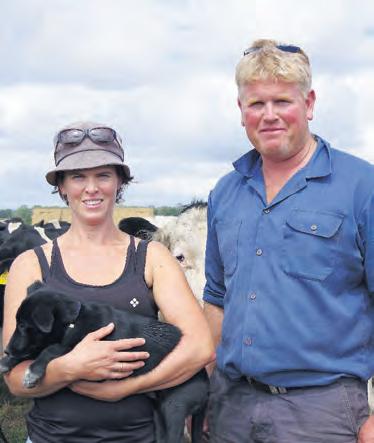
per cent in time. That’s certainly made a difference.
“We have 389 megalitres of our own, but we consumed more water by buying off other farmers. We’ve used 1100 Ml so far this year.
“We used 1250 Ml last year, by also buying extra water from our neighbours.”
The commitment to purchasing fertiliser, urea and water has enabled them to graze their two milking herds as one 550-head split-calving herd.

They also culled heavily each calving season.
“I chopped a bit heavier than normal. I chopped 25 more empty cows out of the autumn calving herd when we dried them off in November,” Frankie said.
“I’ve done the same again with the spring calving herd. They’re drying off now and I moved 25 more empty cows off the farm in June than I normally would.
“Normally I’d milk through more cows.”
Young stock have grazed on the second dairy farm. This property Frankie has also been able to concentrate for growing fodder including harvesting maize and grass silage.
“We were able to harvest maize silage. In October and November I bought straw off Jimmy Dean [a crop grower at Rosedale],” Frankie said.
“We’re now putting the maize silage and straw through the mixer wagon.”
He will continue to apply fertiliser and urea on pastures to force growth during winter.
“Cold weather without adequate groundcover will cause cattle to lose condition quickly.
“We want to keep condition on the heifers too, as they come up for joining and calving down. If we get rain, the ground will turn into mud.”
He hoped milk prices would remain strong enough to help offset these additional costs.
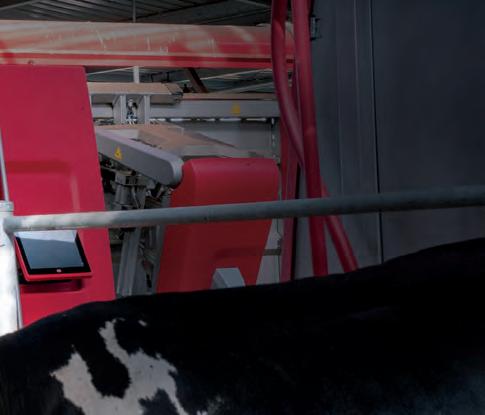





Reduced physical strain and fewer staff issues are some of the main benefits we’ve heard from many of our customers about their robotic milking system. Additionally, the individual cow data from the Lely Horizon system helps farmers with decision making and overall farm management. Are you looking for more efficiency on your farm? Are you looking for a better-quality family time and less strain on your body? Scan the QR code to learn more, and feel free to inquire about an obligation-free visit to a robotic milking farm near you.
Bright farming is yours by choice

BY JEANETTE SEVERS
JASON ROBERTS, a dairy farmer at Yarragon in southern Victoria, doesn’t see anything that helps him in the Victorian Government’s drought response package. He needs rain.
He is also concerned about how long it will take him to recover the number of milking cows in his herd.
Jason farms with his parents, Graeme and Betty Roberts, on the family dairy farm in central Gippsland.
They normally milk 130 cows in a mixed herd of Friesian and Australian Red breeds. The herd is autumn calving and joined using artificial insemination.
“We’re also using all polled semen nowadays,” Jason said.
“We AI all our heifers too. We match like with like. With the cows, I don’t want to breed replacement heifers from, I use Angus semen to produce dairy beef calves.”
Calving finished in early June this year.
The family milks twice a day in a 13-a-side herringbone shed, that was built by Graeme.
These days, Jason is the lead milker, assisted by Betty, and Graeme provides support with tractor work.
As the drought started impacting their Gippsland farm, they started reducing the milking herd.
“We cut back to 100 cows,” Jason said. “I culled out the empty and older cows as
the seasonal drought conditions unfolded.”
All cows were sold straight to the abattoir at Trafalgar.
“I used to sell through the saleyards at Warragul and Pakenham, until they were shut down,” Jason said.
“I don’t like putting stress on the animal by sending it to saleyards further afield.
“It’s less stress to sell direct to the abattoir at Trafalgar. It’s only a few kilometres away.”
In the drought affecting Gippsland this year, one of Jason’s fodder strategies has paid off.
“Every year I cut excess hay and silage. It’s money in the bank,” he said.
“We’ve had no pasture growth since January, and we’ve been feeding the milking herd every day from our fodder stores.
We’ve prioritised feeding the hay and silage to our milkers.”
This has created some concern for Jason because every year he raises his replacement heifers.
This year, he is considering putting off joining the rising-two-year-old heifers because they are backwards from where he wants them to be at this time of the year.
That is a direct result of the lack of pasture growth through summer and autumn.
“So I’m thinking about holding off for a few months, and joining them for spring calving next year,” he said.
That comes with consideration for how long he can carry through what effectively

becomes a second milking herd, before he brings them back into line with the cow herd.
It also means he will have to keep feeding the heifers for a longer period before they can become productive.
Without good pasture to graze, the heifers’ condition is behind where it should be for him to AI them.
“If I AI them for spring calving, it’ll take two years to get them back into sync with the milking herd,” Jason said.
For Jason and his parents, the lack of soil moisture is also affecting a second income stream for their business.
In a normal year, Jason grows out the beef-dairy calves. As this season’s calving comes to an end, he needs to decide if he will sell them as vealers.
Normally, he grows the beef-dairy calves out to 500-600kg. He sold the previous

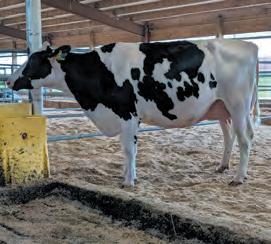
cohort earlier than those target weights, to take the pressure off his fodder stores and rest as many paddocks as possible.
He now has this season’s new Angusdairy cross calves in the shed.
“I run dairy-beef heifers and steers on the bush block,” Jason said.
“I think I’ll have to sell them into the vealer market.
“I also have one-year-old dairy heifers coming along, and this year’s dairy heifer calves.”
There is a lot of competition for prioritising what animals are kept for long-term feeding.
“On the creek flat, there’s enough pick for the heifers, but on the rest of the farm and the bush block, we need rain,” Jason said.
“We need rain so that we can capture water in our dams.”
Which is why Jason sees the Victorian Government’s announcement in May of a grant to support pasture renovation as outof-step with reality and poorly timed.
“Putting in new pastures now is pretty useless, because it’s very cold in winter,” Jason said, in early June.
He also doesn’t employ contractors for re-seeding pastures, because the family owns all the machinery they need for this purpose.
For online-only stories about the drought in southern Victoria, go to: https://www.dairynewsaustralia.com.au
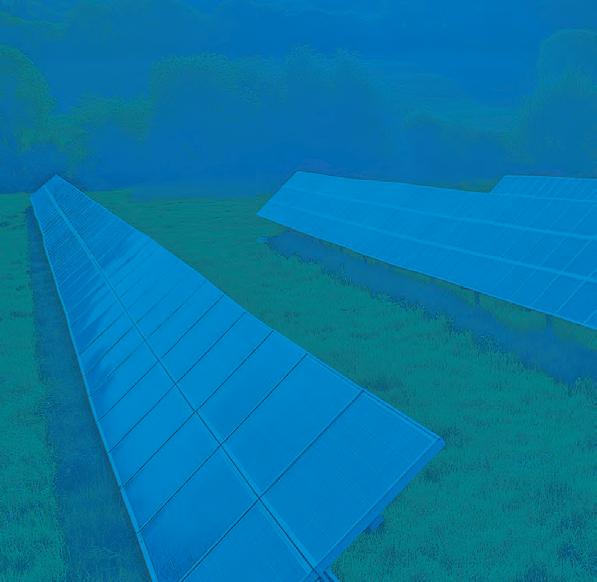

















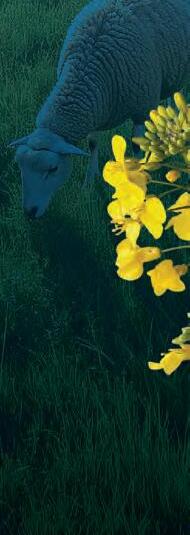





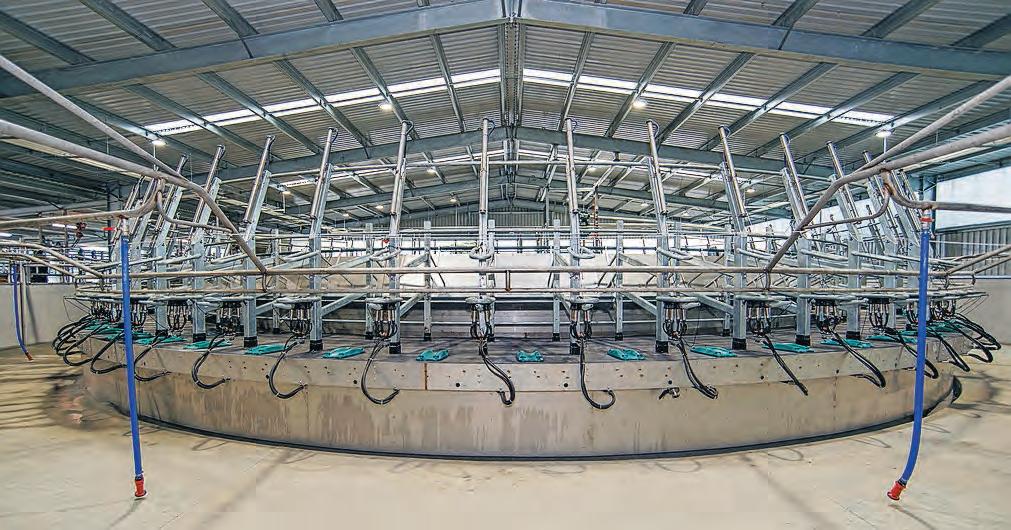


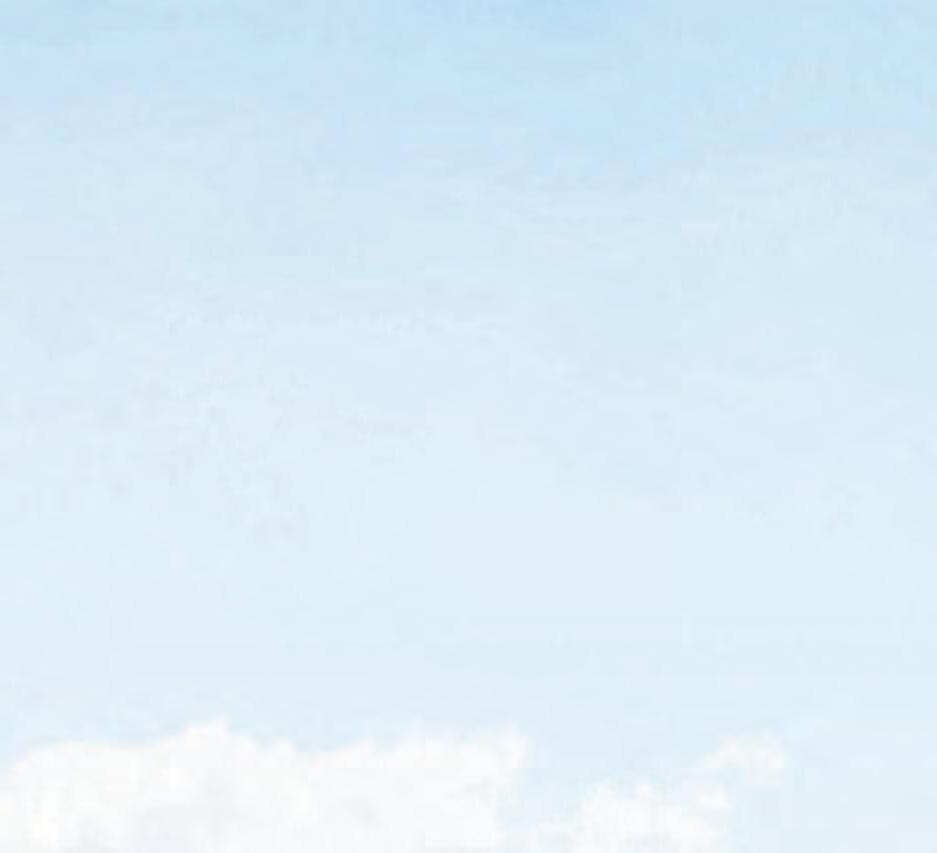




DESPITE INPUT pressures, milk prices and environmental challenges, farmers are still taking bold steps forward.
The Moscript family, with more than 60 years of dairy farming heritage, has taken the challenges head on by investing in the future with a new 60-unit GEA DairyRotor T8500 Rotary Milking System. In 2023, third-generation farmer Callum Moscript and his family made a bold move — they upgraded their conventional milking system and calving shed. They chose the 60-unit GEA DairyRotor T8500 rotary milking system with iSPRAY4 in-bail teat sprayers, automatic cup removers with milk metering, cluster drop down, automatic wash system, and additional equipment, including a VoD Vacuum Pump, Flush Valves and Flush Pump on Pontoon, to ensure efficient farm operations.
“It allows us to scale and grow and expand our business,” Callum said.
In addition to the new sheds, the Moscripts purchased more land in the past five years and nearly doubled their herd to 550 cows.
Callum said the new dairy allowed them to triple the number of cows milked per hour with “a third of the labour” and better monitor cow health and production.
“The yar d can hold 1000 cows. People think I'm crazy for putting a yard in that big but watch me.”
Two years later, Callum says the new GEA system has simplified their milking operations, and the cows are comfortable with it.
“Our team just love it,” he said.
“During a very dry autumn being able to manage cow’s feed individually is a great advantage. Despite it our per cow production is up 2.7 per cent YTD.
“We believe this has a lot to do with less time on the concrete, together with the advantages of the calving shed that has helped with our transition management.
“The investment has given us a platform to chase strategic growth opportunities within our business for the next 30 years.”
The GEA DairyRotor T8500 is known for its reliability, low maintenance and suitability for pasture-based systems — and it can be run by just one milker. The system was installed and is serviced by Gippsland Dairy Professionals in Korumburra, Victoria.
WITH CONSUMERS demanding lower-carbon products and farmers facing rising energy costs, the integration of solar, bioenergy, renewable diesel and electric machinery is no longer a vision of the future — it’s happening now.
These innovations and more will take centre stage for the first time in Victoria with the National Renewables in Agriculture Conference 2025 in Bendigo on July 23.
The conference will bring together farmers, energy experts, researchers, industry leaders and government representatives to explore the practicalities, opportunities and challenges of renewable energy in agriculture.
Among the speakers is Gippsland dairy farmer Sandra Jefford, is working on a controlled microgrid, using solar, to irrigate her property.
She can monitor how much solar is powering her operations and how much is exported to the grid.
“We save significantly on power costs depending on the season,” Sandra said.
“We’ve added more irrigation over the years which has increased our power needs, so we will be adding more solar to one of those sites in the coming months, and potentially more in the future. It just makes business sense to do so."
Also speaking is Victorian pig farmer Caleb Smith.
He has embraced the concept of a circular economy as a core part of his operations, capturing pig effluent to create power, which is helping to reduce their electricity bills.
Delegates will be able to visit Caleb’s farm for a tour of the biogas generator.
“Quite often farmers would like to do something like this but they don’t,” he said.
“I think the reasons we don’t often is because of the unknown. What we don’t know is scarier. So speaking about what we have done and having people come and see how simple it and showing it can be done will hopefully encourage others to do the same.”
New Zealand farmer Mike Casey will talk through his journey to electrify his farm, having the first electric Monarch tractor in the Southern Hemisphere. He has recently installed batteries on his farm and converted a ute to electric.
“We have a 6ha cherry orchard in Central Otago with 21 electric machines that saves about $40,000 a year in energy costs, which is a huge amount of inputs,” Mike said.
Conference founder Karin Stark says momentum is building across the sector.
“Farmers are increasingly turning to renewables to tackle the challenge of rising diesel and electricity prices,” she said.
“But there’s still work to be done in making the right technologies available and ensuring regional contractors and services are equipped to deliver.”
The conference will also explore agriculture’s growing role in decarbonising the electricity grid.
“We’ll be discussing the evolving distribution network and microgrids, and the potential for smaller, distributed solar projects on farms — say 5MW systems — feeding directly into the local network,” Karin said.
“There are also emerging opportunities for farmers to be paid for providing energy services as new markets develop.”
ɋ For more information, go to: www.renew-







You’ve got all you need in the palm of your hands with the CowManager app. Get alerted immediately when a cow isn’t ruminating or eating, so you can intervene proactively. Pick up on diseases like mastitis and ketosis 3 days before any signs of clinical illness are visible, and track recovery in close detail.
Stay ahead of the herd with CowManager’s accurate and timely heat and health alerts.






BY SOPHIE BALDWIN
COBDEN’S FIONA Hanks has joined the ranks of the female dairy elite with her commitment to the industry recognised at the International Dairy Week dinner, where she was awarded the Power of Women in Dairying Bette Hall Award.
Not just a familiar face at IDW, Fiona is well-known across the wider industry for her passion for the industry and her encouragement and support of the next generation of dairy farmers.
She said it was an honour to receive the award.
“I knew Bette Hall when I was young kid and I admired her back then — to receive this award in her honour really means so much to me,” Fiona said.
“Obviously, it was a shock on the night, but I have had some time to reflect, and to have my peers recognise me as a worthy recipient is still overwhelming.
“I am blown away because I never really put myself in that type of category before.”
Fiona’s love for the industry began at a young age after growing up on the family dairy farm in the Western District.
She attended Marcus Oldham studying agribusiness and her first job was working for Coprice.
She then spent a decade in the AI industry.
Deciding to operate her own freelance business, Fiona then jumped on board the

IDW team.
“At the time, I ran into Robyn Barber who was running IDW, and she was looking for some help to raise the profile of the event and the rest is history — Facebook was only new back then,” Fiona said.
She has watched IDW grow from its early beginnings to the international event it is today.
“While it is important to come together in the industry for competition, and it is certainly always great to win a ribbon, it is important to remember all the great things our industry



has to offer, and the Australian dairy industry has certainly come a long way, particularly when it comes to breeding and showing,” she said.
“The level of professionalism across the industry is now world-class.”
Dairying has brought Fiona connections across so many levels.
“I value the many friendships I have made — not just here in Australia, but around the world.
“We all share the same common interest of a love for cows, whether that be in the show
or sale ring, preparing cows, the AI industry or as a farmer.”
Fiona said other highlights had been working with and spending time with many industry greats, including Matt Templeton, who sadly passed away just after IDW 2025.
“Together Matt and I did a presentation for the Youth Camp at Noorat — I get a lot out of helping the youth of this industry, and it has been a major part of my life for a long time.”
She said it was also important to continue to acknowledge the contribution women make across the dairy industry.
“When I first started in the industry it was heavily dominated by males, but over the years, more and more women have become involved and taken up roles, including leadership roles, which is so great to see,” Fiona said.
Power of Women in Dairy Committee member Jade Sieben said after reading Fiona’s nomination form from Bec Robertson, it was easy to declare her this year’s winner.
“I have never met a person quite like Fiona,” Jade said.
“She is so selfless to our industry, I know she says she gets a lot out of it, but I would argue she gives way more than she gets, I’m not sure when she actually sleeps,” Jade said.
And of course, Fiona is involved in the POW Committee, so keeping her nomination a secret did take some clever thinking.
“We did manage to keep it from Fiona, but I am sure the minute she heard my speech, she would have thought something was up,” Jade laughed.


BY SOPHIE BALDWIN
CREAM OF the Crop is returning for its fourth time, with the women only focused event to be held in Warragul on July 29 and 30.
Organiser Chloe Brown said there would be something for everyone, regardless of the role they play on the farm.
“We want every single woman to feel valued whether they are involved in the physical dayto-day operation of the farm, or managing the business side of things,” Chloe said.
“Cream of the Crop is about education, inspiration, connection and sharing in those tough conversations.
“Pumped up women can conquer the world.”
The event will take place at Dazies Event Centre and is set to attract women from across Victoria and beyond.
Day one will feature a powerful mix of keynote speakers, interactive workshops, and a panel discussion.
While some speakers are still to be confirmed, Chloe said Claire Booth would lead a session on succession planning and facilitate a workshop on navigating challenging conversations.
She said one of the highlights of the two days would be a dairy beef pilot program with Butcher Girl Alison Meagher.
“This session is focusing on what a butcher wants from dairy beef,” Chloe said.
“Alison has global expertise in event butchery, training, produce promotion, education

and business consulting, and it will be a fabulous session,” Chloe said.
Other workshops will focus on practical skills including grant writing, HR, and workplace safety.
This year’s panel conversation will centre around the theme Bridging the Gap, and includes Deanne Kennedy from Cows Create Career.
“Deanne’s impact has been enormous,
especially around dairy education in primary and secondary schools,” Chloe said.
Tuesday evening will offer a chance to relax and connect, with a cocktail event featuring food, networking and plenty of fun.
Day two takes attendees on a regional tour of West Gippsland, including a visit to the Ellinbank Research Facility and Gippsland Jersey’s new Packenham factory.
“Our goal is for every woman to leave
Cream of the Crop with knowledge, ideas, and renewed energy they can take back to their farm or community,” Chloe said.
Chloe said the organising committee acknowledged the financial pressures many in the industry are currently facing and is grateful to its sponsors for helping keep tickets affordable $155 for early birds, or $200 after June 15.
Limited subsidies are available for those experiencing hardship.
Tickets are limited to 120 women, and the event is already on its way to being sold out.
“Again, we have been well-supported by our long-term sponsors,” she said.
Last year’s event was held in Echuca and was a sell out, with dairy farmers from South Australia, the Riverina and all areas of Victoria represented.
Two events have been previously held in the south-west.
“Traditionally, Gippsland has been very active supporters of women in dairy, and I am sure these two days will be like all the rest, a wonderful event.”
Chloe said Cream of the Crop was more than just a conference, it is an opportunity for personal growth and connection, which is extremely important, especially during tough times.
“With so many women feeling isolated right now, we encourage them to take a break, make the trip to Warragul, and enjoy the support, ideas and company on offer,” she said.
ɋ Tickets and more information are available at: https://www.creamofthecropau.com



BY JEANETTE SEVERS
VICTORIAN DAIRY farmers are eagerly awaiting the results from the research project into virtual fencing and herding that is currently under way at Ellinbank SmartFarm.
Dairy farmers received an update in progress, and were treated to a panel discussion about virtual herding and fencing at the annual Dairy Muster in Gippsland on April 30.
On the same day, the NSW Government announced its endorsement of virtual fencing and herding technology. Since then, the Victorian Government has also backed its use, with new regulations expected by the end of the year.
These regulations will be partly informed by the Ellinbank research, which is due to finish on June 30.
Virtual fencing and herding technology is an animal management system that relies on cows wearing collars that use auditory and mild physical prompts to guide the animals to graze on fresh pasture.
Internet connectivity tracks the cows and downloads data to the farmer’s smartphone and desktop computer that enables them to instantly monitor their herd’s and individual cow’s location and wellbeing status.
The technology also eliminates the need for internal fences on a farm, with all their risks and maintenance needs.
One Tasmanian dairy farmer who has used the technology since 2023, Troy Ainslie, said adopting the collars had improved his animal welfare and management, pasture utilisation and staff wellbeing.
If a cow did not respond to the auditory stimulus of its collar, the software shuts down the technology to that animal, and Troy receives an alert on his phone.
“If the cow doesn’t move, the software pauses using the collar, I get an alert on my phone, and I go to investigate why that cow isn’t moving,” he said.
“Because there are many reasons why a cow isn’t moving — she could be calving early, she could be a downer cow, or many other reasons.
“As a basic rule, we drop what we’re doing and we go and check on that cow.”
After the NSW government’s announcement in late April, Rob McIntosh, chair of the NSW Farmers’ Animal Welfare Committee, said endorsing the technology would lead to lives being saved — both human and animal — during disasters.
It would also reduce the rollover machinery risk to humans who were trying to build and maintain fences on steep and undulating terrain.
“The technology can save lives by helping move livestock to safe areas during floods, fires, or other natural disasters, without putting humans or animals at risk,” Rob said.
“Virtual fencing is a game changer for farmers, and we are excited about the opportunities it provides for livestock management in NSW.
“It can also help reduce fencing costs, control noxious weeds — there’s almost no boundaries to what this technology can assist farmers with.”
Dairy Farmers Victoria president Mark Billing said virtual fencing technology could also help farmers protect sensitive vegetation, degraded soil areas and waterways from cattle and vehicle incursion.
Mark said he had been advocating to the Victorian Government for regulatory change rather than legislative change, and to implement on-farm trials by the end of this year.
He suggested using a funding model similar to the Internet of Things to support on-farm trials
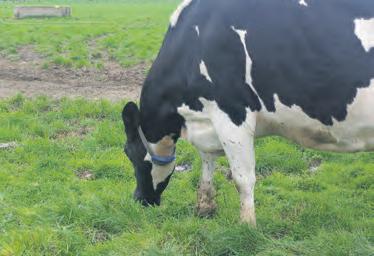
using virtual herding and grazing technology.
“I’ve met with Victorian Government representatives and explained we need assistance to deploy this technology, and helped them identify funding opportunities,” he said.
This would build on the current virtual herding research project at Ellinbank focused on dairy herds, and previous research completed by CSIRO and MLA for the beef industry, as well as university trials in NSW, Tasmania and South Australia.
“I think the application of this technology for a pasture-based dairy system clearly is the game changer,” Mark said.
“The research indicates obviously that there’s a minimal animal welfare impact when used correctly.
“The government is listening, but their main concern, obviously, is ensuring animal welfare. We accept that.
“We need to continue investing in the research for the industry, and we need to collaborate, obviously.”
On dairy farms, a herd of cows wearing the collars also learns to move itself to the dairy for milking, and return to fresh pasture.
A lot of the controversy around take-up of the technology has been around concerns the technology causes stress to cattle.
To guide its decision-making, the Victorian Government is funding the one-year research project at Ellinbank, which comes to its close at the end of June.
Meaghan Douglas, a research scientist at Agriculture Victoria’s Ellinbank SmartFarm, was a member of the panel discussion at GippsDairy’s Dairy Muster on April 30.
Meaghan is leading the demonstration project at Ellinbank that is using HALTER virtual herding and fencing technology and collars on the commercial milking herd.
Meaghan was heavily involved in training the cows with the HALTER technology and works closely with the project team to manage the milking herd and measure results.
“It’s been just incredible to watch the cows. The cows were pretty much trained [to virtual herding and grazing] within a couple of days,” she said.
“We could take the safety fence down that we were using, and the cows knew how to respond to the cues and they were very comfortable doing so.”
An auditory cue is followed by a vibration cue and generally that is the limit of cues necessary for the cow.
Mark Billing said he had met with representatives of the RSPCA to discuss their animal welfare concerns about a pulse cue.
Troy Ainslie pointed out that the HALTER technology in the collars of his milking herd did not work beyond the vibration cue — that if a cow did not respond to a vibration, all cues were automatically halted and he received an alert on his phone to investigate what was wrong with the cow.
RSPCA representatives had also visited


Ellinbank SmartFarm, along with Victoria’s Agriculture Minister Ros Spence, to view the technology in action themselves, and seek clarification.
At Ellinbank, research has measured the impact on the cows of the three cues, and identified the cues are implemented in short bursts over a long period of time, with no pain or sound response from the cows.
“I think it’s really great technology,” Meaghan said.
“We’ve been trialling the effect of the technology on cows’ behaviour, rather than pasture use.
“But we’ve noted it’s much easier to make sure fresh pasture is getting into those cows at the back of the herd.
“The cows are always going back to [the paddock for] fresh feed, rather than waiting for the farmer to go down to the paddock and manually shift the fence for them.
“The cows just walk away from the dairy
[when they are each finished milking], they didn’t stand at the dairy [on concrete, waiting for the herd to finish milking], and they aren’t being pressured by people, dogs, or quad bikes.”
Chris Paynter is a dairy operations assistant involved with Ellinbank SmartFarm’s commercial herd and responsible for grazing management on the farm.
He was also on the Dairy Muster panel of speakers.
Chris said the improvement in pasture utilisation by the herd justified the use of the HALTER collar technology.
“If I had my way, I would be ripping fences out of the farm now,” he said.
Chris said the technology also benefited milking the herd in batches, which was a benefit in summer.
“We’re going to segregate them into 150 to 200 cow herds, just so they’re not spending time on the concrete when it’s hot [to] limit stress that way,” Chris said.
BY JEANETTE SEVERS
TROY AINSLIE was bought up on a dairy farm and wanted to be a dairy farmer, but without the financial risk.
He is now the farm manager for a 180 hectare farm at Cressy, Tasmania, on one of eight farms in the state that are owned by Compass Agri Australia.
Compass Agri Australia owns the farm, infrastructure and herd, and Troy is paid a manager’s salary and a profit-share incentive.
“The profit share system means I still have a bit of skin in the game,” Troy said.
He was a guest speaker at GippsDairy’s Dairy Muster on April 30, where he was on the panel to discuss virtual herding.
Troy and Toni Ainslie, of Woodrising Dairies, received the accolade of the 2023 ANZ Tasmanian Dairy Business of the Year.
Also since 2023, they have been using HALTER collars and software for virtual herding, pasture management and to complement their herd health and reproduction systems.
The ease of adopting collars for virtual herding, and the results for their farm business has seen Compass Agri Australia install them across all their Tasmanian farms.
“We put it on the cows at Woodrising Dairies in June 2023, and it was Compass’s plan to roll it out across the other farms over the next 18 months,” Troy said.
“Within 16 months, they had rolled it out across the lot.
“The company really saw the benefits of some of the early indicators of the benefits of using it across all the farms.”
The Cressy dairy farm managed by Troy is fully irrigated, in a 500 to 600mm rainfall zone, and milks 540 crossbred cows off a 155ha milking platform.
Irrigation enables the farm to grow grass yearround, feeding out 1.2 tonne/cow of grain annually, and producing 1.08 milk solids per kilogram of body weight per cow.
Season-dependent, a decision is made pre Christmas whether to carry through or sell empty cows, or to join them for late calving, or to sell them in-calf and as late calvers in the autumn.
Troy said training the milking herd and heifers to virtual herding and virtual fencing was straight forward.
He was comfortable with the prompts used by the system.
“First there’s an auditory cue that you want the cows to move,” he said.
“That noise gets louder over an extended period of time. It’s much like a vehicle beeping sound, like when you’re backing.
“The auditory cue indicates to the cows that it’s time to move. They may be moving to go to the dairy or to move on to fresh pasture.
“If they have to move out of the paddock — to go

to the dairy or for animal health needs — a vibration cue begins.
“The auditory alert is followed by a vibration cue that it’s time to move. As far as I’m aware, that’s the only two cues we’ve used.
“If the cow doesn’t move, the software pauses using the collar, I get an alert on my phone, and I go to investigate why that cow isn’t moving.
“Because there’s many reasons why a cow isn’t moving – she could be calving early, she could be a downer cow, or many other reasons.
“As a basic rule, we drop what we’re doing and we go and check on that cow.”
Troy said the two-year-old heifers coming into the mob were the easiest to train for virtual herding.
“When we bring our heifers home to calve, we keep them in a separate mob,” he said.
“They took just five days to know what to do with the virtual fencing and the virtual herding. By seven days, we were comfortable their training was complete.”
Since 2023, Troy has measured quantifiable improvements in time management and herd health.
“The one straight up is your virtual fencing and herding,” Troy said.
“Nobody was having to go and put fence reels up any more. Nobody has to go and herd the cows in to the dairy any more.
“That saved us a lot in fuel. I went from using 1000 litres to 100 litres of fuel a month.
“That was the first indicator that there’s something happening that you know is an improvement.
“Nobody is sitting on a quad bike behind the herd, twice a day, travelling at 4km/h.”
The morning milking shift starts at 5am, because no-one has to go into the paddock at 4am to
BY JEANETTE SEVERS
GORDON LOCKETT would like to see virtual fencing and herding technology in use in Victoria, and on his two Gippsland farms. “It’s a game changer for the dairy business, pasture management, and for animal and worker health, safety and wellbeing,” he said. Gordon, of Stanvale Farms, Neerim North, milks alongside his wife, Margaret, and their sons.
They own two dairy farms, and milk 510 mostly Holstein-Friesian cows across both platforms, using Lely robotic units.
Gordon said integrating virtual fencing
and herding technology into his management system would improve worker safety.
It would also enable him to reconfigure his farms and reduce the need for infrastructure maintenance in hazardous conditions.
Both of his dairy farms are in steep country.
“Two of us get up at 4am every morning to move the stragglers to the dairy,” he said.
“With this technology, I can pre-program when I want the cows to get an alert and begin moving to the dairy.”
Gordon disputes any risk to dairy cows from using the technology.
“We make a living out of our animals, and the last thing we’d do is hurt them,” he said.

for a better lifestyle and work-life balance on the farm.”
For Troy, the immediate advantage of using the collars with an integrated software management system, is being able to sleep in occasionally, and to be able to rely on his staff to identify a cow in heat.
He said a flashing LED light on the cow’s collar made it easy for all milking staff to identify the animal was in heat.
Troy said that had a flow on effect to wellbeing among staff.
“Compass management wanted to eliminate the occupational risk of having staff in the paddock in the dark, which led them to adopt the HALTER technology,” he said.
“We haven’t had a sick day among the staff since we started using HALTER technology.
“When we arrive in the dairy in the morning, we’re dry and we turn on the heaters and it’s a comfortable atmosphere.
“We haven’t used wet weather gear in two years.”
When the lead cows leave the dairy, they return to fresh pasture, and by the time the entire herd is finished in the milking shed, Troy is able to allocate more fresh pasture to the end of the herd.
“Cows don’t stand at the back of the dairy and wait to return to the paddock,” he said.
“We use a pasture management tool to identify how much grass has been eaten and forecast how much we’ll need in the next seven and 14 days.
“We’re able to better utilise pasture and we use irrigation and fertiliser to make the grass grow when we want it.
“We’ve been able to ramp down our fertiliser use in spring to match our rotation.”
Next season, Troy expects to increase his herd from 3.6 to 4.0 cows/hectare.
He has also cut down the labour hours required on the farm, with the advantage of reducing overtime.
“Our busiest time on the farm is in July and September, when we’re calving and feeding out. We were able to cut 400 hours out of our staff of 3.4 equivalent full-time workers.
“So that’s a bit over four hours a day. That makes
“When it comes to reproduction, it doesn’t matter what system you’re using, it takes a long time to teach somebody how to do reproductive assessment correctly on a cow,” Troy said.
“With a HALTER collar, you have a flashing LED light that anyone can see.
“That allowed me to give a junior staff member with limited experience the responsibility of drafting off a cow, that me or a senior farmhand can follow up.
“We still teach the necessities of what you have to look for – but it’s sped up the process, and they gain new skills and confidence, and feel very much part of the team.
“And I, who’ve just come off nine weeks of calving, can get a sleep-in.”
Improving reproductive assessment has led to improved in-calf rates.
“This season we had a six per cent increase in our six-week in-calf rates, to 70 per cent,” Troy said.
“We only mate for nine weeks and we’re straight AI for the whole time.”
Troy said similar results had been recorded at other farms in the group.
“One thing that isn’t talked about enough is the benefit of the work-life balance and improved mental wellbeing that this system gives us,” Troy said.
“This is a better way of doing dairy.
“I chose not to be a sharefarmer or own a dairy farm because I wanted a better work-life balance than my parents had.
“I have that now with my kids. I’m at every school carnival, I’m at every football game, I’m at every football training.
“And it’s not only me. It’s my whole team who have this advantage.”

BY COBY BOSCHMA
YOUR COWS are the backbone of your dairy business. Keeping them healthy is essential, not only for their wellbeing but also for the profitability and future of your farm.
Often, once symptoms are detectable with the naked eye, it’s a sign that there may be underlying and maybe even urgent health issues that have needed addressing.
Here are five tips for keeping your herd healthy when it matters most.
Monitoring your cows regularly allows you to spot any early signs of illness or discomfort, which can help prevent bigger problems down the line.
Symptoms like decreased appetite, lethargy, or changes in behaviour could be signs of an underlying issue.
Luckily, there are tools to help farmers detect transition diseases, such as ketosis and mastitis, even before calving. This makes managing the transition period a bit easier.
With 75 per cent of all adult cow diseases occurring in the first 30 days after calving, early intervention can make a huge difference.
Symptoms of ketosis include loss of appetite, weight loss, and a sweet-smelling breath, which can be difficult to detect early without a monitoring system.
Additionally, the early signs of mastitis, such as

What your cows eat has a direct impact on their health. Proper nutrition is crucial for maintaining a healthy, productive herd.
Ensure your cows have access to a well-balanced diet that meets their energy, protein and mineral needs. When cows are fed the right nutrients, their immune systems are stronger, and they are better equipped to fight off infections or diseases.
A common issue in dairy herds is a drop in eating and rumination, which is often caused by a negative energy balance, especially in cows that have recently calved or are recovering from




illness. Make sure your cows are receiving enough energy during the dry period and early lactation.
There are nutrition monitors out there, designed to help you determine what your cows’ dietary needs are. That makes it easier to track ration changes and eating patterns on individual and group level, to make sure your herd gets what they need.
Cleanliness plays a huge role in preventing a range of herd health problems, especially those related to the udder.
For housed herds, regularly clean barns, stalls and feeding areas, and ensure that cows have access to fresh, clean bedding.
Pay attention to sanitation in the dairy, as bacteria can easily enter through the udder during milking. A protocol for washing and disinfecting
teats before and after milking can significantly reduce the risk of mastitis and other udder-related infections.
Stress is one of the leading causes of health issues in dairy cows, affecting everything from milk production to immune function.
When cows are stressed, they are more susceptible to diseases, so it’s important to create a lowstress environment.
Provide plenty of space for your cows to move around, as overcrowding can lead to stress, which can negatively affect cow health. Try to keep your cows’ environment as consistent as possible to avoid unnecessary stress.
No matter how much you know about herd health management, there will always be times when you need expert advice.
Working closely with a team of experts and a qualified veterinarian is key to keeping your herd in top condition.
They can help you identify the root causes of health issues, and provide guidance on how to prevent or treat these conditions.
Experts can assist in the early detection of diseases, recommend vaccination schedules, and help implement herd health programs that suit your specific needs.
ɋ Cow monitoring systems can help keep your herd healthy. For more information, visit: www. cowmanager.com/australia
ɋ Provided by CowManager.








Power Systems Australia are the Australian AKSA distributor for a large range of Diesel, Gas & Hybrid generators for stand-by and prime applications. No matter what style or size of generator you are looking for, Power Systems Australia are your Generator specialists.








BY SOPHIE BALDWIN
DAIRY AUSTRALIA has released its mid-year 2025 Situation and Outlook report, acknowledging strengthening export prices and growth in the domestic retail market have helped inject value back into the supply chain.
During 2024-25, farmers have been hampered by wet conditions in the north and dry conditions in the south, although recent rains have helped ease some of the burden in the drier areas of the southern basin.
From a supply perspective, Australia is on track to maintain a national milk pool of 8.3 million litres, however, concerns around climate, input costs and milk prices have increased.
Dairy Australia is forecasting the 2025-26 milk pool to decrease slightly to around 8.24 billion litres, although this will depend on access to affordable irrigation, seasonal conditions and input costs.
According to the 2025 National Dairy Farmer Survey, 55 per cent of farmers are feeling positive about the industry’s future and 71 per cent feel positive about their own future (both of which have dropped since 2024).
Climate for the past five years has remained the greatest concern nationally, and this year, 69 per cent of businesses have been impacted by extreme weather.
Only 18 per cent of businesses are reported to be in an expansion phase and high operating costs including temporary water prices, global fertiliser prices and an unstable export market with rising volatility have contributed to concerns.
The survey found business positivity is at its lowest point in five years.
Confidence is slightly higher among farmers in NSW, subtropical and Western Australian respondents, while significant declines are evident in South Australia and the Murray, western and Gippsland areas of Victoria.
Less than two thirds of farmers are expecting to make an operating profit for 2025, with 57 per cent of the industry expecting profits to be lower than the past five years.
Dry conditions, limited pasture growth, increased reliance on purchased feed and lack of stock and domestic water have weighed heavily on milk production.
The region’s herd has contracted, with some

almond hulls to fill the feed gap.
Competition for land from forestry has seen some farmers exit the industry.
Improved weather conditions and cow numbers could see an increase in numbers for the coming season, however it is expected less farms and smaller herds is the most likely outcome.
Production continued to grow in 2024-25, although end-of-season pressures did mount in the final months, with the region bypassing most of the weather challenges until December.
Production was supported by farmers with access to irrigation in the Macalister District.
While there have been some farm exits, several were purchased by existing dairy operations.
Dry conditions in the latter part of the year increased culls, and it is expected production for the 2025-26 season will ease.
High farm land values are also deterring entrants in the most expensive dairying region of the country.
which may have occurred, although increasing irrigator costs due to water availability and channel access have had an impact.
Continued pressure on water prices may lead to further exits and production is likely to track steady or slightly below for the coming season.
NSW is likely to be the only state to end the season with production growth, however it has not been devoid of challenges.
Access to irrigation in the southern part of the state has driven growth, while extreme weather conditions in the north due to cyclone Alfred has been an absolute nightmare for some farmers in the north.
Farm exits have been retained within the industry and there have even been some new entrants.
Strong investment from key producers has driven growth, and depending on irrigation availability and pricing, there is potential for growth in the coming season.
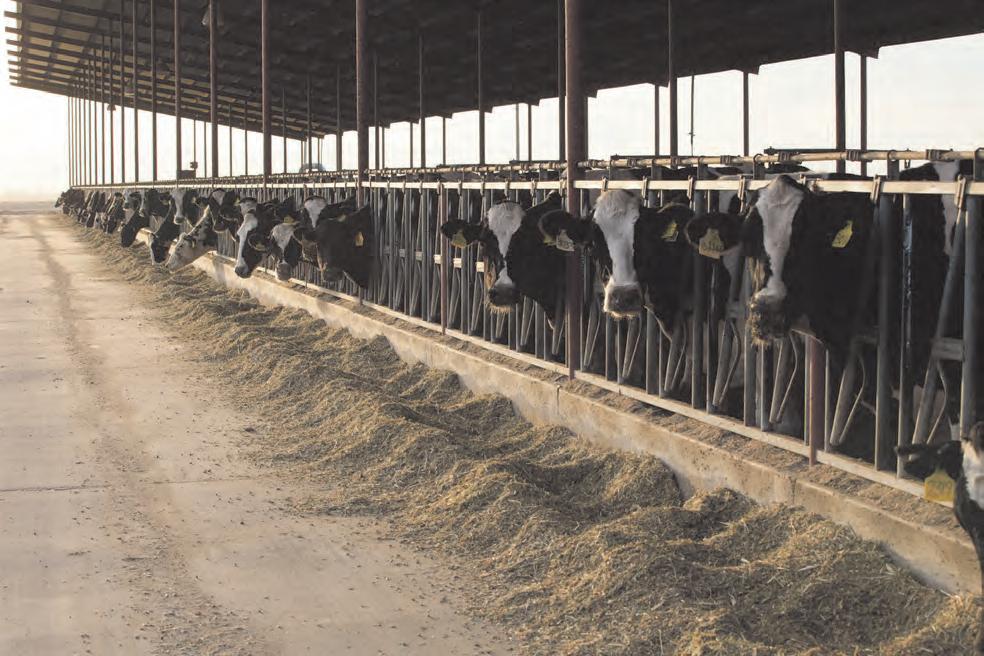
Wet conditions, especially in the far north, have impacted animal health, pasture growth and feed
Southern Queensland managed to escape severe floods. Several farmers in a winding down
stage have stayed in the industry longer than expected, and there has been some appetite to invest in infrastructure.
These investments may support production next season, however decreasing herd size and less farmers will limit growth. Milk volume is expected to track steady or slightly down.
Extreme dry conditions and changes in the processing landscape have impacted on sentiment.
Some farmers have dried their cows off early to help limit production costs and the state’s volume has been easing since December.
Many farmers under contract are due to expire June 30, and if difficult weather conditions continue, this could lead to some exits. It is predicted production will continue to ease in 2025-26.
Milk production has been tracking down despite favourable weather conditions.
Backlogs from 2023-24 season have been resolved, however this has left the state with a significantly smaller herd – eight herds have converted to beef as part of retirement plans.
The milk pool is estimated to sit around 300350 million litres if weather remains stable and farm exits slow.




A MELBOURNE cheesemaker has taken out the top gong in the Royal National Agricultural and Industrial Association of Queensland (RNA) prestigious Royal Queensland Awards.
Australia’s best beef, lamb, cheese, dairy, ice-cream gelato and sorbet were awarded from a total of 540 entries. The number of cheese and dairy entries in the competition increased by 35 per cent compared to 2024.
Montefiore Cheese from Melbourne — which uses time-honoured Italian recipes — was awarded the Grand Champion Cheese or Dairy Product of Show for their Trecce.
Trecce is a fresh, soft, braided cheese, typically made from cow’s milk.
Meanwhile, the nation’s best ice-cream, gelato and sorbet was taken out by Scoop Gelati Bar from Burleigh on the Gold Coast for its Yuzu Gelato.
Dairy awards chief judge Russell Smith said the grand champion cheese was “phenomenal”, and the standard of entries across
the two dairy competitions was very high.
“The Montefiore Trecce was exceptional quality, scoring 19 points, and certainly deserves its grand champion status,” Russell said.
“It’s rare for this type of cheese to win over cheddars and blues, which have more complex flavours, speaking volumes about how excellent it is.”
Ice-cream, gelato and sorbet judge Savannah Sexton said the grand champion gelato was exceptional.
“The Yuzu Gelato was balanced in flavour, very creamy and refreshing, and the acid from the yuzu rounded it out nicely,” she said.
Award winners were:
Grand Champion Dairy Product of Show (Australia’s best cheese): Montefiore Trecce by Montefiore Cheese Aust Pty Ltd.
Grand Champion Ice-cream, Gelato or Sorbet of Show (Australia’s best ice-cream): Yuzu Gelato by Scoop Gelati.


The Royal Queensland Awards’ Grand Champion Cheese or Dairy Product winner was Peter Ferrante from Montefiore Cheese.
Champion Cow’s Milk Cheese of Show: Montefiore Trecce by Montefiore Cheese Aust Pty Ltd.
Champion Non-Cow’s Milk Cheese of Show: Floridia Cheese Buffalo Mozzarella by Floridia Cheese Pty Ltd.
Champion Dairy Dessert or Yoghurt of Show: Maleny Gourmet Passionfruit Yoghurt by Maleny Cheese.
Dairy Australia Champion Butter, Milk or Cream of Show: Norco Pure Jersey Milk by Norco Foods.
Champion Buffalo, Goat, Sheep or Other Non-Cow’s Milk Product of Show:atural Sheep Milk Yoghurt by Meredith Dairy.
Champion Queensland Cheese or Dairy Product of Show: Blackall Gold Washed Rind by Woombye Cheese.
Champion Vanilla, Chocolate or Strawberry Ice-cream or Gelato of Show: Lindt Chocolate 70% by The Standard Market Company.
Champion Flavoured Ice-cream or Gelato of Show: Yuzu Gelato by Scoop Gelati.
Champion Ice-cream or Gelato of Show: Yuzu Gelato by Scoop Gelati.
Champion Sorbet of Show: Spicy Pineapple Sorbet with a touch of Tequila by Wicked Ice Cream.

NORCO, THE country’s oldest 100 per cent Australian farmer-owned dairy co-operative, has marked its 130th birthday with a week of celebrations in its local communities.

Norco was formed when a group of 40 farmers gathered in Clunes near Byron Bay to discuss how they could secure a better future for the farmers of the region.
In its heartland community of Lismore, Norco brought back the school milk program, offering free milk for all primary school students in the region for one day only — its official birthday on Thursday, June 5.
Norco delivered thousands of milk bottles to participating schools, paying tribute to its heritage and the region where it all began back in 1895.
Chief executive officer Michael Hampson said the team at Norco could not think of a better way to honour its history and say thank you for 130 years of support.
“We wanted to celebrate all our farming families, many of whom are multi-generational, that work rain, hail or shine to deliver the best, freshest tasting dairy for our co-operative,” Michael said.
Andrew Wilson, a fourth-generation farmer who has been supplying Norco for almost three
decades, said he and his family were proud to be part of the oldest and last operating dairy co-operative in Australia.
“Being a Norco dairy farmer is more than just producing great dairy,” he said.
“It’s a great source of pride for not only me, but my whole family and we truly appreciate anytime someone chooses to buy Norco, because when they do, every cent goes back to support farming families like ours, and for that we are genuinely grateful.”
The year Norco was founded also marked a prominent time in Australian cultural history with the famous bush poet, Banjo Paterson, first composing Waltzing Matilda. So on the Gold Coast, Norco partnered with Banjo’s namesake school, A.B. Paterson College, in a series of commemorative birthday activities.
While the college choir sang Waltzing Matilda, senior students buried a time capsule on the grounds of Norco’s factory in Labrador, to be opened on Norco’s 150th birthday.
For an extended version of this story and more pictures, go to: www.dairynewsaustralia. com.au
BY DJEMBE ARCHIBALD
DAIRY PRODUCTS from ghee to flavoured milk and everything in between were given top prizes in recent industry awards.
The Dairy Industry Association of Australia awards saw leading companies as well as smaller, independent businesses come together to celebrate the best in Australian dairy.
Kyvalley Dairy, based in Kyabram in northern Victoria, won Australia’s Best Flavoured Milk with its Coach House Dairy Co Chocolate Milk.
“It was a beautiful night,” Kyvalley Dairy general manager Joanna Savva said.
“We weren’t expecting it, to be honest ... but then when our name got called out twice, that was a really big surprise. It was quite exciting to get up there.”
The best coffee flavoured milk was won by Bega Cheese again with its Dare Double Espresso Milk.
But that wasn’t all for Bega Cheese, as it took out the 2025 best cheddar cheese award for its Lagoon Street Mature and Lagoon Street Heritage Vintage Cheese.
Five:AM Dairy also had a successful award season, with its Vanilla Bean Yoghurt, winning both Australia’s Best Naturally Flavoured Yoghurt and Australia’s Best Organic Dairy Product.
Gippsland’s Berrys Creek Gourmet Cheese, a specialist blue cheese manufacturer, won five awards on the night.
The awards were the highest scoring cheese, blue cheese, non-cheddar cheese, non-bovine cheese and most outstanding small-scale manufacturer show exhibit.
Shepparton-based dairy company Kisaan won an award for their newly launched natural pot-set yoghurt.
“We couldn’t imagine that in our first year, our product could do so very, very well. We were amazed that we won an award,” Kisaan co-director Jaspreet Singh said.
The best ice-cream was taken out by Bulla Dairy for its Reece’s Nutrageous.
“No other country can beat our quality or the taste of our ice-cream,” Bulla Dairy chief



executive officer Allan Hood said.
“Reece’s Nutrageous is a rich creamy indulgence that captures the depth and texture of chocolate coated roasted nuts balanced with a smooth taste.
“What elevates this ice-cream from good to exceptional is how well it blends the nuttiness with the creaminess of the ice-cream.”
Apollo Bay’s Dooley’s Ice Cream also received an award for its Premium Raspberry Ice-cream
Bannister Downs Dairy won the coveted Australia’s Best White Carton Milk.
“Winning this coveted prize is a massive achievement for Bannister Downs Dairy, who won against Australia’s leading brands,” DIAA former president and current marketing manager Darryl Cardona said.
“Arguably, this was because of its superb taste, and unique processing, which is packaged on farm, and available exclusively in Western Australia.”
















New CEO for Dairy Australia
Dairy Australia has announced the appointment of Dr Matthew Shaffer as its new chief executive officer, marking a significant leadership transition for the organisation.
Matt most recently served as CEO of DataGene, an industry-owned organisation focused on driving genetic gain and herd improvement in the Australian dairy industry.
Prior to that, Matt was CEO of Holstein Australia and started his career in the
finance industry for the US-based Hancock Agriculture Investment Group.
“Matt brings a wealth of experience and a proven ability to deliver meaningful change,” Dairy Australia chair Paul Roderick said.
“His leadership at DataGene — along with his deep engagement across global networks, government and the dairy industry — positions him well to lead Dairy Australia into a new era ... (as we prepare) to launch a new five-year strategy.”
Matt will succeed current managing director Dr David Nation, who is stepping down after seven years in the role.
“David has challenged the status quo and championed initiatives that have had a lasting impact on the dairy industry,” Paul said.
“Under his guidance, Dairy Australia has become a more people-focused organisation with a clear commitment to delivering value for the industry.”
Aussie Jerseys in New Zealand
Australian Jersey genetics have been showcased at the Southern Hemisphere’s largest agricultural event in New Zealand.
Jersey Australia was joined by Genetics Australia and Agri Gene at the Mystery Creek Field Days near Hamilton from June 11 to 14, and also hosted a nearby farmer day. It was the first time Jersey Australia has had a site at Mystery Creek and follows the success of the World Jersey Conference hosted by Jersey Australia in April.
“We had a highly positive response with good visitor numbers and a lot of genuine interest. The most pleasing thing was how many people are already using the products and how many of them plan to use more,” Jersey Australia general manager Glen Barrett said.
The pure Jersey population in New Zealand is less than 10 per cent of the market, crossbreeds — usually a Jersey-Holstein Kiwi cross mix — are about 60 percent, and Holsteins 30 to 35 per cent.


Jersey New Zealand president Julie Pirie says the future for Jerseys in NZ is bright. She said Australian genetics could play a big role in increasing Jersey numbers in NZ. Mr Barrett said he expected Jersey Australia to return to New Zealand in 2026 to continue building momentum and potentially host a larger roadshow.
Well-known western Victorian Jersey breeders Chris and Pam Mackenzie, of the long-established Coorievale herd established by Alex MacKenzie 60 years ago, recently held their first stage complete dispersal sale on-farm at Cooriemungle.
The top price of $12,000 went to Coorievale Chip June, bought by Darren Crawford of Muttama, NSW. The same buyer selected several of the top lots throughout the sale.
The high-performance Jamber herd of Robbie and Ash Wilson in NSW bought the second highest lot, Jireh Irwin Adrienne, for $11,000 along with several others.
Young breeder Lloyd Akers, of Tallygaroopna in northern Victoria, selected the highest gBPI cow, Jireh Circus Belle, for $9000.
Other northern Victorian buyers included the Master Breeder Kaarmona herd; Jaynaela Jerseys of Byrneside; and R. and J. Easterbrook of Tatura.
Selling agents Dairy Livestock Services and Charles Stewart Nash McVilly report buyers were from all parts of Victoria, NSW and Tasmania.
The 140 cows sold averaged $3615, while 15 spring calving heifers averaged $2100. In total, the 155 Jerseys grossed $537,500.

LIVESTOCK OWNERS looking to use alternative feeds as the drought continues in south-west Victoria and extended dry conditions in other parts of the state, are urged to be aware of the risks and limitations.
As most by-products are produced as surplus from food making industries, they can have their challenges when using as feed alternatives for livestock.
Therefore, you need to consider your animals’ fibre needs first and build from that base.
For example, an option such as palm kernel expeller (PKE) is becoming more popular, and while it is high in fibre, the fibre is not functional in the rumen, so you still need hay or straw in the diet. PKE also needs to be stored dry to use safely.
Another key consideration is to check by-products are free from Restricted Animal Material.
For example, using bakery waste such as bread rolls could be illegal if they have bacon in them, or have come into contact with meat products.
Restricted materials also include rendered products, such as blood meals, meat meals, meat and bone meals, fish meals, poultry meal and feather meal, and compounded feeds made from these products.
Another concern is chemical residue levels.
By-product material such as citrus pulp, fruit pomace, grape marc, vegetable skins and outer leaves can have concentrated levels of agricultural chemicals which could increase livestock residue levels. Which may lead to withholding periods for meat and milk.
For this reason, producers will need to declare if they have fed by-products on their National Vendor Declaration (NVD) within 60 days of selling livestock.
With hay getting dearer more farmers will be looking at alternative feed sources, and it pays to spend time before you purchase to think through the risks, practicalities and considerations on how by-products can fit into to your farming operation.
My three top tips for producers to think about when purchasing alternate stock feeds:
ɋ Never feed Restricted Animal Material.
ɋ Be aware of chemical residues.
ɋ A sk for and provide the required vendor declarations.
ɋ By Brett Davidson, Agriculture Victoria dairy regional manager at Tatura.
By-products such as palm kernel expeller (PKE) are becoming more popular.
DROUGHT IS a reality for many of our dairy farmers.
Many farms in south-west Victoria have no grass cover, just bare soil and a few weeds which hold no nutrient value and can harbour anti-nutritional factors or toxins.
So, what to do?
All cattle will be affected, but is most drastic for cows coming into calving and lactation.
Insufficient feed can retard the final gestation phases of the foetus, leading to weak, smaller calves.
For the cow, low energy and unbalanced nutrient diets can result in body condition scores going backwards. This is at a time where she needs to be on a rising plane of nutrition to ensure she has enough body



reserves to cope with increasing demands.
As cattle utilise forage fibre for energy from rumen fermentation, lack of these feedstuffs severely limits their ability to generate enough energy to meet basic requirements.
Lack of balanced mineral supply means cows do not have sufficient levels to prepare for the increased demands due to foetal calf development and lactation.
This is not just for calcium, but all esse ntial minerals in correct balance.
Feeding single source materials, such as cereals or protein sources (such as peas and beans), does not constitute a balanced diet.
This can actually make deficiencies worse, due to digestion and absorption conflicts and higher metabolic costs, where
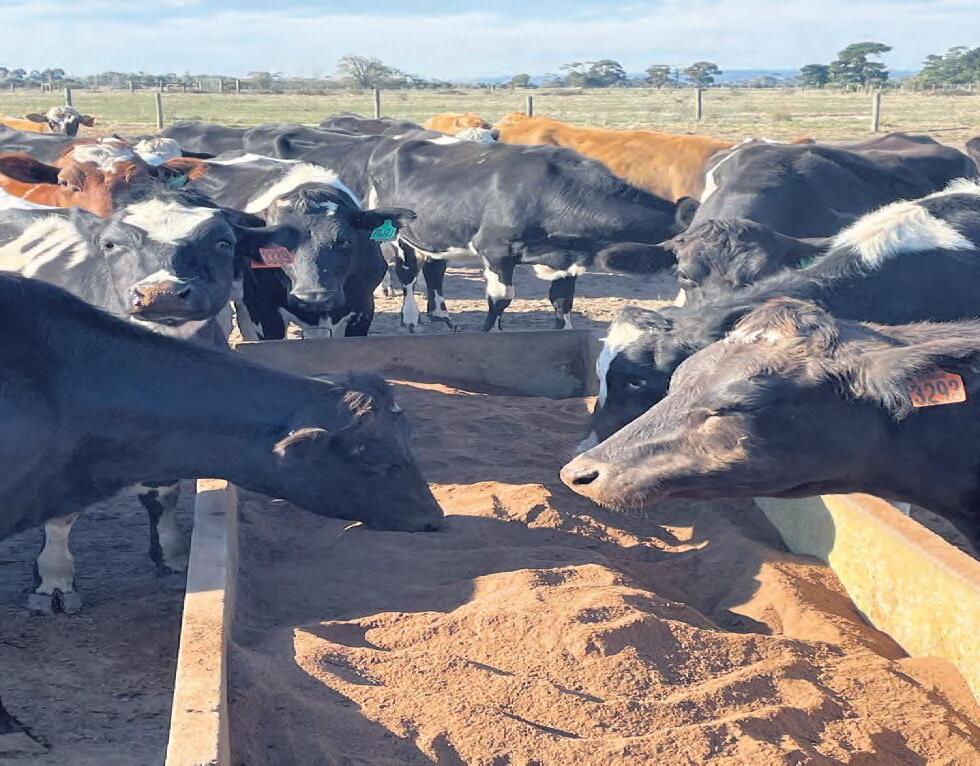
physiological safeguards are firefighting to try to regain some semblance of balance to support maintenance, let alone the demands of gestation and lactation.
Overall outcome? Poorer condition scores, increased tissue stress, leading to more infections and welfare problems.
The big issue is that it is easier and cheaper to maintain cows in good condition by using a higher fibre balanced diet to meet these esse ntial requirements, rather than trying to bring her back from a depleted state.
This will help overcome the additional financial problems relating to poor quality calves (which need more care, veterinary costs and time to reach weaning) and lower yields of poor quality milk.
• Australian Made with BlueScope steel
• 8m to 45m capacities
• Built to your specifications
• HD bowl with 10mm walls
• Demo machines available
• Trades welcome
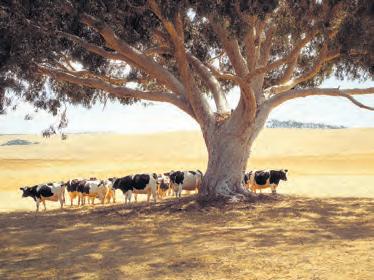



RABOBANK’S SOUTH Australia manager
Roger Matthews has praised dairy farmers for their resilience and determination in facing significant challenges created by ongoing drought conditions across parts of southern Australia.
Mr Matthews said the prolonged dry conditions in a number of areas of South Australia and western Victoria have led to significant water shortages, high feed costs and reduced pasture growth.
“Dairy farmers have managed their way through many droughts before, but this drought certainly rates among the most challenging seen in a number of regions in South Australia and Victoria,” he said.
Mr Matthews said while the majority of the bank’s clients were managing the prolonged dry conditions in these regions well and remained in overall solid financial positions, Rabobank was offering support where required through the current difficulties.
“This unprecedented and prolonged dry spell has been impacting all farming enterprises in affected areas, but is particularly challenging for dairy farmers.
“Dairy producers are reliant on more expensive purchased fodder and grain, which also incurs the additional cost of freight.
“Further impacting this is the ability to source good quality fodder, which is






becoming scarce and costly.
“And when the autumn break arrives in winter, it is often too cold for good growing conditions, further limiting availability of grass.”
Mr Matthews said Rabobank’s rural managers are working closely with impacted farmers to understand the specific challenges they are facing and work on solutions together.
He said as a global specialist in agribusiness, Rabobank takes a long-term view on its clients’ businesses and understands dealing with periods of extreme weather is part of being in the agricultural sector.
Mr Matthews said the bank’s recently-released 2025-26 Australian Dairy Market Outlook found solid fundamentals for the dairy sector — supportive of positive farm gate milk prices, though the bank’s RaboResearch division is expecting local milk availability to tighten in the new dairy season.
“The adverse seasonal conditions have impacted milk flows in western Victoria, South Australia and Tasmania in the 2024-25 season,” he said.
“With national milk production flat yearon-year through March and rainfall deficits persisting, the risk of a production contraction in Australia in 2025-26 remains high, until seasonal conditions improve.”
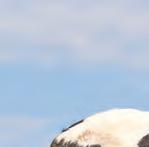



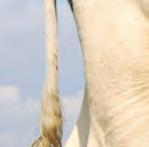

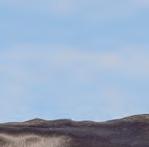



“This unprecedented and prolonged dry spell has been impacting all farming enterprises in a ected areas, but is particularly challenging for dairy farmers.” — Roger Matthews






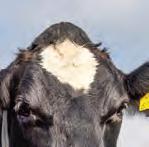
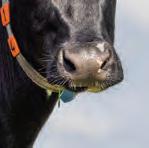
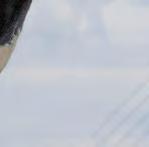



EVERY DAIRY farmer has unique goals — whether it’s boosting milk production, improving herd condition, enhancing fertility, or maintaining animal health.
At CopRice, we understand that achieving these goals starts with quality nutrition.
Our team works alongside you to design a targeted feeding strategy using scientifically formulated concentrate rations and premium grain blends.
These feeds deliver consistent levels of essential nutrients in every mouthful — supporting dry matter intake, balancing macro and micronutrients, and enhancing milk solids production, fertility and overall herd wellbeing.
CopRice offers a range of concentrate feeds, quality pellets and expertly crushed grains blends that can be fed to meet the needs of high-performance herds or to fill seasonal nutrition gaps.
Whether you’re looking to complement home-grown feed or push production to the next level, we’ll help you find the right mix.
All CopRice products include vitamins and minerals to support immune function and productivity.
Our pellets and grain blends are carefully selected and processed to ensure palatability, consistency and optimal nutrient availability — so your cows get the right balance in every mouthful.
For information on tailoring a feeding program to suit your herd and your goals, call CopRice on 1800 267 742 or visit www.coprice.com.au Provided by CopRice.























There’s a lot of pressure to optimize milk and component yields. MFP® Feed Supplement delivers methionine, essential to milk and component production, with additional rumen activity to help fight milk fat depression. Developed by intelligent nutrition in a dry, granular form, it’s ideal for premixes, feed mills, and local co-ops. Produce milk that’s made of more. Start feeding solutions at novusint.com

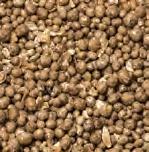




























FARMERS ACROSS Australia are doing it tough with hay sheds empty across the south, prices soaring and hay heading north to south in a rare reversal of supply flow.
Feed Central managing director Tim Ford says farmers are doing it tough at both ends of the country and prices are climbing — cereal hay is pushing $400/ tonne and lucerne is up to $500/tonne.
“Flood recovery is still under way in parts of western Queensland, while many regions in South Australia and Victoria are facing one of the driest autumns on record with empty sheds and key rainfall windows missed,” Mr Ford said.
The tough conditions have led to a rare reversal of the usual supply flow, with good quality hay moving from north to south.
Mr Ford said while Queensland still has stock, this shift and the associated uncertainty means it’s selling faster than usual this season.
H e said Australia was used to weather extremes but this season “seems more extreme than ever”.
Many communities are just recovering from prolonged flooding in western Q ueensland.
About 2000 tonnes of hay was dropped from helicopters and trucked into the flooded regions, but Mr Ford said that had not made a significant impact on the fodder market.
However, the dry conditions in the south are heavily impacting on sellers, suppliers and farmers.
“There is tension in the marketplace and real anxiety about supply,” Mr Ford said.
“Southern regions like to have their autumn break by Anzac Day but that has passed and there has been no rain of significance through vast areas of South A ustralia and Victoria since then, which means there are zero pastures.”
Mr Ford recently toured clients’ farms in South Australia.
“It was as dry as I’ve ever seen it,” he said. “The dust was ready to go, the soils are very fragile and the groundcover is very low.”
Southern Queensland growers have experienced a run of good seasons but Mr Ford warned against complacency.
“A level of complacency about hay supply has come into the market in Queensland but buyers need to be careful because the hay is going to slip south really quickly,” he said.
“In historical terms, we would never ship hay from Queensland south but the vast majority of South A ustralia and Victoria is totally exhausted of hay supply. You’ve got basically every shed empty.
“Hay in southern Queensland is going to be sold down fairly rapidly, fairly soon.”
Most of Queensland remains unaffected by recent fire ant restrictions but most loads require the correct documentation
ADVERTISEMENT
Rumen-Protected Fats Increasingly Valued For Functional and Environmental Benefits
With around 2.5-times the energy concentration of cereals, fat has long been viewed as an energydense supplement to meet the high energy demands of lactating dairy cows.
In the early days, it was clear that adding higher levels of oils, or higher fat ingredients, to rations had detrimental effects on fibre digestibility and milk fat. However, the development of the calcium salt technology and the Megalac formulation was a revolution in providing the ability to supplement rations with highenergy fat without these negative effects. Furthermore, as they are not fermented in the rumen, fats increase energy density without adding to the acid load in the rumen that we would get from starchy sources of energy such as cereals. Similarly, recent data demonstrate significant reductions in methane production when Megalac was added to dairy diets.
Dietary fat is also a precursor to the production of progesterone, the key ‘hormone of pregnancy’, an important element driving improvements in fertility.

for interstate movement, particularly into South Australia.
Feed Central’s LocalAg is offering a lifeline to help disaster-impacted farmers access hay.
It is gathering non-binding expressions of interest in sourcing potential hay supplies
Mr Ford said a coordinated response was needed to assess the magnitude of the disaster and address the urgent needs of farmers.
“People can go to the webpage https:// www.localag.com.au/haywanted to
register their interest and let us know the quantity of hay they need,” he said.
“Having that data will allow us to have discussions with government around biosecurity protocols, particularly out of Western Australia, and with providers to start coordinating a large-scale freight and logistics plan.”
Mr Ford stressed that farmers completing the form were not signing a binding contr act but simply lodging an expression of interest.
He said LocalAg was working on interstate supply options.
“We realise that farmers are doing it tough from both drought and flood and getting data about their needs will allow us to help them.
“We are looking to Western Australia and Queensland for supply options but need to know what is needed so we can make a more complete submission to government and can work through the supply logistics
“At the moment it’s happening in an ad-hoc way so we need an understanding of the volume required and we may be able to help with a more coordinated approach to address the problem.”
Mr Ford said farmers expressing interest would later have the opportunity to enter a contract once availability was confirmed.
ɋ More details can be found at: https://www. localag.com.au/haywanted
However, our primary interest is in the effect of individual fatty acids. Palmitic acid (C16:0) improves milk fat production but it’s important to ensure this isn’t at the expense of reduced body condition score. In contrast, oleic acid (C18:1) can improve body condition, as well as increasing total diet fatty acid digestibility and energy supply from the basal diet, and aid development of fertilised eggs, leading to an increased likelihood of successful pregnancy.
Fat is what we often describe as a ‘cool’ nutrient. Not being fermented in the rumen, heat arising from digestion and metabolism of fat is much lower than other feed ingredients and the animal generates less internal heat, targeting lower heat stress while increasing energy density to help counter reduced dry matter intake.
With a 40-year history, Megalac is one of the most-proven feed ingredients on the market.
Dr Richard Kirkland, Global Technical Manager for Volac Wilmar Feed Ingredients, the manufacturers of Megalac.

Megalac
For the latest on Methane production and rumen-protected fats, please see the accompanying article below. www.dairyglobal.net/health-and-nutrition/nutrition/ methane-production-and-rumen-protected-fats/
THE VICTORIAN Farmers Federation has welcomed the Victorian Government’s announcement of a streamlined permit system for fodder deliveries and an expanded road train network in south-west Victoria.
VFF president Brett Hosking said the announcement follows the second meeting of the Victorian Government’s Drought Response Taskforce and the decision will benefit drought-hit farmers.
“Farmers in the south-west can’t get their hands on fodder quick enough,” Mr Hosking said.
“This expanded road train network will remove red-tape and allow larger trucks into the region to deliver much-needed fodder for stock.
“Farmers and transporters have been telling us the barriers around getting fodder into these drought-hit areas in the quantities needed has been one of their major frustrations and this move will go a long way to fixing that.”
Mr Hosking added the move to enhance measures to improve the management of kangaroo populations and streamline the Authority to Control Wildlife permit process was also welcome.
The VFF has been working closely with the government, industry stakeholders and farmers to deliver targeted relief as Victoria’s record drought continues.
“We’ve been working on the expansion of the road train network and the cut to red-tape for some time,” Mr Hosking said.
“Farmers have enough to deal with at the moment and this is a step in the right direction.
“This is a great example of industry, farmers, regulators and the government working together to get things done.
“The impact of this drought will be with us for some time and we need to ensure all levers are pulled to support those doing it tough.”
WHEN IT comes to maximising productivity and profitability on Australian dairy farms, Ausmix feed mixers stand out as the ultimate investment.
Proudly Australia’s own feed mixer brand, Ausmix is built in Wodonga, Victoria, with Australian Bluescope Steel.
Our mixers are designed with economic efficiency at their core.
By custom-building each unit to suit the unique requirements of Australian dairy
farmers, Ausmix delivers optimal feed mixing performance, reducing waste and improving feed conversion rates.
This means your herd gets the precise nutrition it needs, leading to healthier cattle and increased milk yields — directly boosting your bottom line.
Farmers across Australia are experiencing these benefits first-hand.
“It’s the local support and part availability that is the big winner for Ausmix,” Malcolm
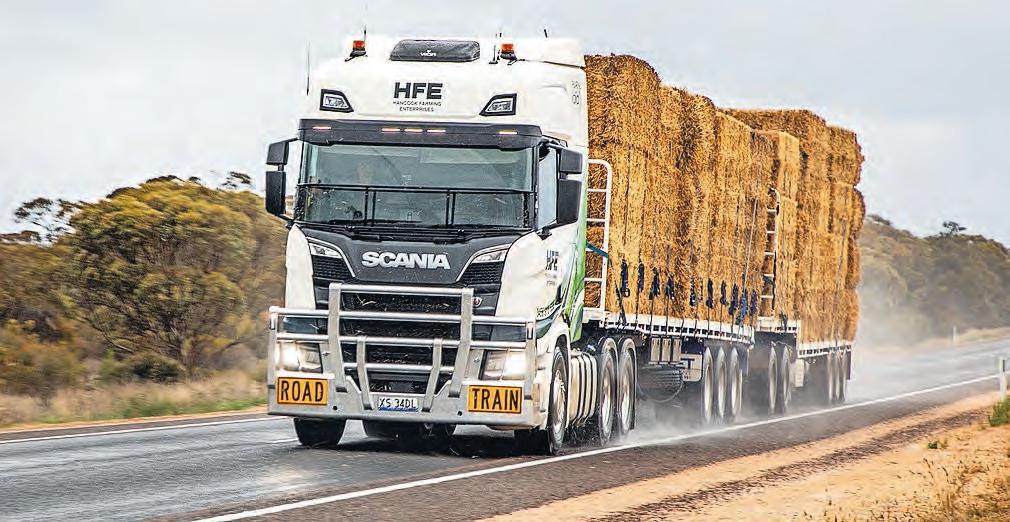
Holm said.
“It feels like the team cares, with continual check-ins on how our mixer is performing.
“Now on my second Ausmix you can see the continuous R&D Ausmix are putting into their mixers, subtle design changes — the new stainless steel liner in mine is just a no-brainer.”
Kate Smart from NSW loves the off-road capability of the Ausmix.
“The Ausmix wagon feels to be built to last and very stable,” she said.
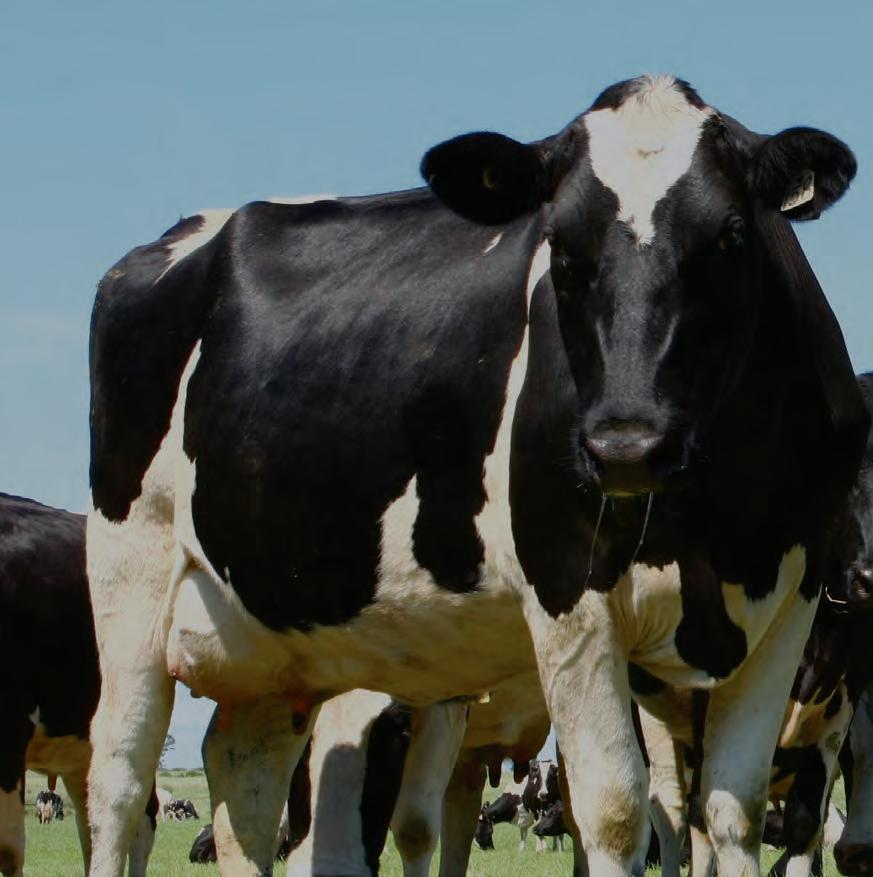

“I take it through rough paddocks and through gullies. The heavy duty construction of the chassis and suspension definitely helps.” Built tough to withstand Australian conditions, Ausmix mixers are more than just durable — they’re cost-effective, performance-driven assets for your farm.
Investing in Ausmix means investing in long-term efficiency, profitability and peace of mind.
ɋ Provided by Ausmix.








A GOFUNDME page to help a south-west Victorian hay contractor to fight a fine for moving two bales of hay across a road is now helping the mental health of all farmers.
Feed Central’s LocalAg started the appeal after Condah farmer Graham (Thommo) Thomson was fined $398 by the National Heavy Vehicle Regulator (NHVR) for moving two bales of hay across a dirt road to help a fellow farmer during the drought.
The appeal has met its goal to help Thommo with all further donations going to the National Centre for Farmer Health at: https://farmerhealth.org.au/
Feed Central managing director Tim Ford said Thommo had appeared as a guest on a
recent Feed Central podcast and was wellknown across Australia.
“Thommo’s story has gone viral, and although he didn’t expect the attention, he wants to use it to make a positive impact on the industry he’s worked in his entire life,”
Tim said.
“We’ve started this GoFundMe page on Thommo’s behalf to raise funds for his court case and to support a mental health initiative for farmers doing it tough.
“Thommo is choosing to contest the fine in court because he believes that, after more than 60 years in the industry, helping a neighbour feed their livestock shouldn’t be penalised.”
Tim said Feed Central’s LocalAg established
AS THE dry season settles across Australia’s pasture-based dairies, forage quality and availability typically decline.
To maintain production, many producers increase the grain in the ration to compensate.
Higher grain inclusion often comes with a drop in milk fat, a critical component of farm income.
High-grain, low-forage diets elevate fermentable starch levels, which favour propionate-producing bacteria.
While this increases energy availability, it comes at the cost of acetate, a volatile fatty acid (VFA) essential for the synthesis of milk
fat in the mammary gland.
The reduction of physically effective fibre (peNDF) and associated risk of subacute ruminal acidosis (SARA) only worsens this fat depression.
To mitigate this, dairy nutritionists are turning to precision formulation strategies that support rumen fermentation and buffer fat production.
Feed technologies containing the hydroxy analogue of methionine (HMTBa) offer a dual-action mechanism.
By supporting favourable rumen conditions and serving as a methionine precursor,

this fundraiser to help cover legal costs and to help in making the voices of farmers heard.
At Thommo’s request, any funds remaining after court costs will be donated to farmer mental health.
Thommo said he had been heartened by the level of support in the community and for the GoFundMe appeal.
“I’m very happy with the response to the appeal and with the amount of support I’ve got. I’ve been told it’s even made the BBC news in England.”
His main priorities now are to inform all farmers about the transportation rules and to help farmer mental health during the ongoing drought.
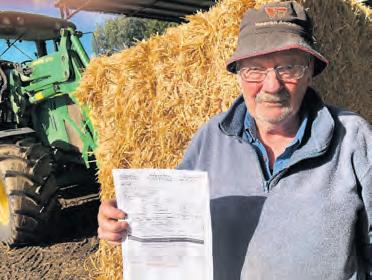
“A lot of farmers don’t know that it’s a rule that you can’t transport hay across the road so the government needs to advertise it,” he said.
ɋ The GoFundMe page is at: https://www. gofundme.com/f/help-thommo-fight-hisfine-for-moving-hay-in-a-drought
HMTBa contributes to both microbial protein synthesis and the production of methionine.
As an added benefit, it stabilises rumen fermentation and improves feed conversion efficiency.
Intelligent use of methionine-based feed supplements — especially those built around HMTBa — can help protect butterfat yields when pasture no longer can.
In an industry where every kilogram of milk solids matters, protecting butterfat through smart nutritional strategies is essential, especially during the dry season.
By choosing solutions that support rumen
function and fat synthesis, nutritionists and producers can maintain consistent performance.
Now is the time to evaluate your ration and consider what adjustments could help your herd thrive when forage falls short.
MFP Feed Supplement delivers methionine, essential to milk and component production, with additional rumen activity to help fight milk fat depression.
Developed by intelligent nutrition in a dry, granular form, it’s ideal for premixes, feed mills and local co-ops.
ɋ Provided by Novus.
You work too hard to leave your calves’ future to chance.
Feeding the wrong calf rearer doesn’t just risk slow growth—it threatens your herd’s immunity, fertility, and lifetime production.



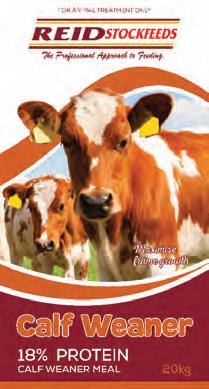



IMPORTERS LOOKING to bring fodder into Victoria from interstate can go thr ough Agriculture Victoria to apply for a Plant Biosecurity Permit (PBP) to ensure biosecurity risks are properly managed.
Agriculture Victoria is providing a free service to suppliers, transporters and farmers to navigate permit requirements and expedite access to fodder.
Ongoing drought conditions have created serious challenges for Victoria’s livest ock industry, particularly a critical shortage of hay and fodder — so farmers are needing to look interstate for source supplies.
All imported fodder requires a PBP to manage key biosecurity risks from entering Victoria from interstate, including annual ryegrass toxicity (found in all states except the Northern Territory and Tasmania), green snail (found in Western Australia), red imported fire ant (found in Queensland) and electric ant (found in Queensland).
Agriculture Victoria chief plant health officer Stephen Dibley said all fodder imports will require a PBP, except for NT and Tasmania.
“Given the ongoing tough conditions across the state, Agriculture Victoria is prioritising permit applications for fodder to make sure essential transport can be fast tracked,” Dr Dibley said.

and pressures in the farming community. Farmers under financial stress as a result of drought or other pressures can access support and resources 365 days a year. This includes:
ɋ Rural Financial Counselling Service (RFCS): Free and confidential business planning support. Go to: https://agriculture.vic.gov.au/ farm-management/business-management/farm-debt-mediation/ rural-financial-counselling-service
ɋ Farm Household Allowance (FHA): A fortnightly Federal Government payment. Go to: https://www.servicesaustralia.gov.au/ farm-household-allowance
ɋ R egional Investment Corporation: Low interest drought loans of up to $2 million to assist farmers to prepare for, manage and recover from drought. Go to: https:// www.ric.gov.au/loans
ɋ Local councils also offe r rate hardship policies.
“Costs associated with the inspection of interstate fodder by Agriculture Victoria where it is required, will be waived.”
For more information and to apply for a plant health permit, visit https:// agriculture.vic.gov.au/biosecurity/
“Once a Plant Biosecurity Permit is submitted, our team will be in touch within two working days to discuss and assess the specifics of your import request,” he said.
moving-plants-and-plant-products/ plant-biosecurity-permit or email it directly to: market.access@agriculture.
vic.gov.au
Agriculture Victoria is actively monitoring seasonal, economic and social conditions across the state, and this information is used to continuously inform the government on current and emerging conditions
ɋ Ongoing supports are outlined in Agriculture Victoria Resource Directory, available at: https://agriculture.vic.gov.au/farm-management/ emergency-management/floods/ recovery-resources-and-events/ resource-directory
ɋ For the most current information on available drought and dry seasonal conditions support, visit https://www.agriculture.vic. gov.au/dryseasons or call 136 186.

FIBRE IS essential to achieving good rumen health in dairy cows, which is the key to healthy and productive animals.
Many fibre sources can be fed to dairy cows if they are supplemented with high-energy feeds and protein sources as part of a balanced diet.
When pasture is limited and supplies of fodder reduced, farmers may be forced to consider using alternative fibre options they have not used before.
These options vary widely in nutritive value, digestibility and effective fibre value. They also may present risks such as decreased feed intake, mycotoxins and chemical residues, so it is important to be cautious.
Nutritional values of high-fibre by-products are particularly variable and feed analysis tests should be done before buying alternative fibre sources.
Some alternative fibre sources which may be available depending on seasonal circumstances and location include:
Ce real straws (barley, oat, triticale, wheat): Cereal straws are poor nutritional quality forages (low in energy and protein) but are highly effective fibre sources.
Their sole purpose in a cow’s diet is to help stimulate chewing and saliva production and maintain a fibre mat in the rumen. If fed at substantial levels, they will reduce performance due to very low energy content and low fibre digestibility which limits feed intake.


Almond hulls: Almond hulls are a good forage extender with medium effective fibre value when fed whole. They are a reasonable energy source with good palatability but are low in protein.
Almond hulls are available whole and milled.
Whole hulls have a higher effective fibre value but a lower bulk density. Milled almond hulls provide no effective fibre.
Rice straw: Like cereal straws, rice straw is a poor nutritional quality forage (low in energy and protein) but a highly effective fibre

source. Its sole purpose is to help stimulate chewing and saliva production and maintain a fibre mat in the rumen.
Rice straw is high in silica and low in lignin compared to other straws and palatability and intake issues should be considered.
Sugarcane products: There are two main by-products of sugar production sourced from cane growers in NSW and Queensland — whole plant sugar cane forage (silage or hay) and sugar cane tops (hay).
Both are low nutritional quality forages but

high in effective fibre values. They can vary widely in nutritive value depending on the age, variety and amount of frosting of the cane.
Products are high in iron, magnesium, potassium, manganese, cobalt and aluminium, which may interfere with phosphorus absorption and silage may contain some significant residual alcohol (six to 17 per cent).
Grape marc: Grape marc raw meal is a by-product of red and white wine production sourced from winemakers. It is a forage extender, not a grain replacer, and varies widely in nutritive value.
Whole seeds are largely indigestible and grape marc is high in tannins, low in pH and may contain some residual alcohol.
Buying grape marc in pelleted form may be an option. Potential advantages over raw grape marc are higher digestibility because grape seeds and skins are dried and hammer-milled before pelleting, less prone to mould growth, given dry matter content is much higher (about 90 per cent) and can be stored in a silo rather than on the ground.
With daily feed intake reduced and more grain or concentrates being fed to maintain energy intake in hot weather, the quality and amount of fibre sources fed is critical.
High-quality fibre is the best tool farmers have to maintain rumen stability and increase nutrient density without producing excessive metabolic heat.
ɋ From Dairy Australia.







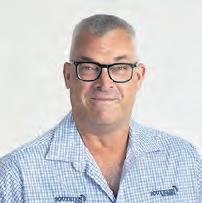
















BY DR ROBERT BONANNO
FOR SPRING calving cows, the month of July is one of great anticipation, and sometimes trepidation.
The spring is almost upon us, and I hope that by now you are well prepared with a cleaned out, sanitised and freshly bedded calf shed, your plan is in place for colostrum collection and feeding, and your farm crew are hopefully feeling refreshed and ready to attack the busy period ahead.
July is also a really important time because now is when you must begin to implement a lead feeding strategy that will hopefully set up the spring calving cows for a trouble-free, successful lactation.
If you have a great transition plan in place, you will have already considered the logistics of both feed procurement, storage and delivery.
Too often I see herds struggle at transition because they have either not secured quality low-potassium forages or implemented a lead feeding strategy. Feeding grain in the two to three weeks pre-calving will help to adapt the rumen for the lactating cow diet.
Using various strategies to reduce the risk of milk fever like anionic salts or calcium and phosphorous binders can significantly reduce the risk of both clinical milk fever and sub-clinical hypocalcaemia.
Sub-clinical hypocalcaemia is often an

invisible syndrome that may occur even in herds with quite low incidence of clinical milk fever. It is a ‘gateway disease’ that will predispose cows to many other clinical problems that occur at or around calving, and it can have some longer-term implications on reproduction and lactation performance.
When I visit farms to set up their herd health protocols, I always discuss the importance of the transition period and why the incidence of certain diseases of transition are so important to monitor and identify. Obviously, individual cows need to be detected with the specific diseases so that they can be treated early, according to the appropriate protocol, to ensure that they recover and enter the herd in a productive way.
The diseases of transition include milk fever, retained membranes, ‘dirty’ cows with metritis, ketosis and left displacement of the abomasum (LDA).
They provide us with a real time measure of the success (or otherwise) of the transition program because whenever the


incidence of these important diseases is higher than targets, it indicates that there is a problem somewhere in the transition process.
Higher than normal incidence of retained membranes (sometimes called RFM) is a strong indicator of immune system compromise.
For many years as a young veterinarian, I would go out to ‘clean’ these cows, attempting to pull the membranes out and over the years I have seen many and varied techniques used by farmers in an attempt to coax retained membranes out.
I now know that the process of a cow expelling her afterbirth is a process that actively involves the immune system, and that failure to ‘clean’ is actually a failure of the immune system.
So an increase in the incidence of RFM to above about three to four per cent of births could indicate a serious issue with the herd’s resilience and immune response, which could in turn indicate a greater risk of other diseases occurring like mastitis.
I now recommend cutting the hanging membranes about one handspan below the vulva to prevent the afterbith from hanging in the dirt and manure, acting like a ‘wick’ and I provide the cow with a fresh cow drench with something like freshstart and propylene glycol to give her the supportive care that she needs.
I recommend that you monitor the cow for infection and treat her with antibiotics
and anti-inflammatories only if she becomes unwell. I do NOT recommend trying to remove the membranes unless they can come away with a gentle twist after five days or so.
I think it is fair to say that any time you put your hands inside a cow’s reproductive tract you can be pretty certain that you will be introducing infection to the tract and potentially complicating the cow’s own host responses, so consider the need to do so.
Fresh cow and sick cow drenching is in my mind one of the greatest tools we have for providing supportive care to a fresh dairy cow who has developed a transition disease.
Most fresh cow drenches are made up with calcium propionate and propylene glycol along with various other ingredients designed to provide essential minerals, rumen modifiers and energy precursors.
I prefer using a McGrath flexible rumen pumping tube as it is very simple to introduce and with a tiny bit of instruction can be used to safely pump 25 to 30 litres of fluid into a sick fresh cow in just a couple of minutes.
I would encourage all farmers to consider getting one of these and having your local ProDairy vet give you a quick lesson in its safe use. It will completely revolutionise your sick cow treatment repertoire and also allow you to provide proactive care for cows at high risk of failing to transition well.
Dr Robert Bonanno is a ProDairy regional lead for Apiam Animal Health.
RECENT AUTOMATIONS in data transfer from on-farm software is a game-changer for farmers, dairy vets and advisers.
Dr Craig Wood, from Terang and Mortlake Vet Clinic, has been analysing the data from dairy herd records for years, to help his clients make informed decisions about mastitis management, selective dry cow treatments and culling.
Until now, accessing herd data has been challenging. Craig either had to visit the farm to download the data himself or get the farmer to create and email him a file or get a back-up file from the on-farm software. This process had to be repeated regularly.
“It was a time-consuming but worthwhile exercise because making decisions based on actual herd data directly affects the farm’s financial performance, as well as animal health and welfare,” Craig said.
He is excited about the DataConnect project which enables farmers to set up a daily, automatic transfer of herd data from the farm to the industry’s central data repository.
This means farmers and their trusted advisers
can log into DataVat.com.au to access reports based on actual herd records to gain insights into mastitis management, selective dry cow therapy, improving herd fertility and genetic progress.
“The recent automations enable my clients to give me permission to access their herd data and reports anytime, anywhere. I can give better advice, faster, especially in the herd health space. This really is a game-changer,” Craig said.
DataGene is rolling out connections with a variety of systems progressively over time, with DeLaval and GEA systems already up and running and others in progress.
“The process is quick, easy and secure. It’s a once-off task that involves a 10-minute online session with DataGene’s IT staff, who set up the connection process,” Craig said.
Once connected, data is updated to the central data repository every night. Herd owners control who they give access to their records via the DataVat website portal.
DataGene is inviting dairy farmers with any system to express their interest now and they will be contacted when their system can connect.


FOR KEVIN and Brodie Game, it’s the name of their dairy operation at Bemboka, on the south coast of NSW, that says everything about their bold plan to become first-generation farmers.
“Blackjack Holsteins; because when we started it was a bit of a roll of the dice, so we put it all on Blackjack,” Kevin said.
“It is unusual to be first generation. It’s just so hard to get into farming if you don’t have that generational farm, or money.”
But what Kevin and Brodie had in spades was determination.
“My dad always said horses cost money and cattle make money, so I took that to heart,” Brodie said.
They started with two cows, and grew it to six, while rearing bull calves on their milk.
“We came down here one day (to Bemboka) to buy bull calves and I called into a bloke’s place and asked him to lease his farm,” Kevin said.
“He didn’t really want to lease so we sharefarmed, then the milk price crashed. He was losing money, but we had just put our life savings into 60 crossbred heifers and didn’t want to get out.
“We went to the bank with everything we had, literally everything, and we got lucky. So, we went from six cows to 180 cows pretty quick and now we’re at 450.”
On a typical day on the farm, Brodie heads out at 3am to run the morning milking while Kevin gets their two boys ready for school.
Brodie then does the school run before working in the office until the afternoon milking, while Kevin is in the paddocks sowing, irrigating silage and feed crops or seeding, depending on the season.
Adding an extra layer of complexity to their business is that dairying is classified as food production, and in NSW, farms are audited by the Food Authority, in the same way as cafes and restaurants.
“Our records have to be spotless, right down to the batch numbers on the chemicals we use on crops and in the dairy,” Kevin said.
“If we lose that food licence, we don’t have a business.”
Pivotal to accurate record keeping has been their investment in two John Deere utility tractors, a 6175R and 6110M, fitted with automatic guidance and JDLink, which provides seamless data exchange between the machines and the office.
John Deere’s online management systems, John Deere Operations Center and JDLink, have been life-changing for the farm, Brodie said.
“I didn’t realise John Deere technology was so powerful until we bought the tractor,” she said.
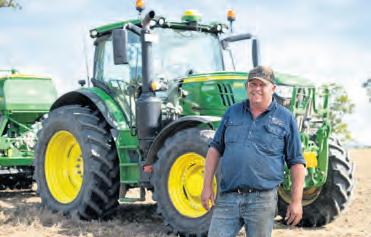
“Now, when our audit processor comes through, everything is ready to go. I literally print the data off the Operations Center.
“I used to have to rely on Kevin and the workers to write all the details into a little notebook. This is so much simpler, so much safer. It gives me peace of mind and it means Kev and I can plan things out.”
For Kevin, the initial drawcard for buying John Deere was JDLink, which provided connectivity in an area with unreliable service.
“To have the John Deere techs able to remotely log on to our tractors and tell us what to do is great, rather than waiting for a technician to come,” he said.
“With Ops Center, our whole farm is mapped now and Brodie can set jobs from the office. So, a worker can drive into the paddock, the plan will come up on screen, and away he goes.
“The record keeping is fantastic. With audits they require batch numbers, which way the wind was blowing on the day you sprayed the paddock, and it’s printed out on the little ticket at the bottom. There’s no argument.”
Before they bought the R Series four years ago, Kevin and Brodie thought investing in a John Deere machine would be too expensive.
“When we were at a very high-risk level in terms of debt, buying a John Deere seemed like a big jump,” Brodie said.
“But we know the cost that comes with second-hand machinery if there’s a breakdown and you don’t get your grass cut on time, or your silage baled or seed in.
“In terms of investment, you can’t go wrong. These tractors are so easy to maintain, easy to work with, we don’t have breakdowns. If we have questions, there are so many support services to get us back on track.
“Ops Center just makes everything so simple and streamlined, and I can work from the comfort of my office.


“Where we’re contracting out to another smaller farmer, we can see the fuel usage, exactly what the tractor did, and then cross-reference that with what I’m charging them. There’s no guessing.”
Now that they’ve achieved their dream of buying the farm, the couple has set new goals.
“There are so many ways that we can improve our operation, our management and the farm itself to make us more efficient, more
productive, more sustainable, and Operations Center is a part of that. It has made our life so much easier,” Brodie said.
“It’s very similar to the cows. They’re our heart and soul, our liquid gold.
“So, to have assets like our John Deere tractors that are going to last and be value for money, it’s definitely worth it.”
ɋ Watch the Game family story at: https:// youtu.be/VUBEySSn384
















ICONIC PARASITE CONTROL TRUSTED BY MILLIONS1,2 Eprinex® Pour-On, proven on-farm where it’s needed. For powerful protection against internal and external parasites, with nil milk or meat withholds.















